2016 Yamaha WR450F
Has Yamaha Reinvented The Full-Size WR?
MSRP: $8990.00
- A way better WR with tons of available engine performance lurking inside.
- Competition Kit and GYTR Power Tuner let this bike come alive and be easily tuned.
- Very durable for such a high performance machine.
- The suspension isn't as good as we'd have expected.
- The scale doesn't lie (268 lb. full of gas) but at least the bike hides it well.
- Needs some tuning right off the showroom floor.
- No handguards.
Introduction
- Can the 2016 resurrect the popular Yamaha WR450F?
With Yamaha’s continued push into more off-road products, the new and redesigned WR450F was obvious. Though the WR450F has been in the lineup this whole time, the previous version was never a standout success. It was, by most accounts, a confused bike that didn’t seem to have a place made of mixing and matching old WR and some newer YZ parts and throwing fuel injection on at the last moment. The new 2016 bike is a whole different bike and a much better platform. Using the 2016 YZ450F as a platform and not deviating too much, except for the smart off-road necessities and the required sound and emissions regulations, Yamaha has reignited the WR. The question is can the proper performance still come through in this package?
Changes
- All-New for 2016.
- Based closely off the YZ450F.
- All the off-road stuff you need.
The WR450F was expected. With Yamaha releasing the YZ250FX and WR250F a year ago the inclusion of a full-sized WR was just a matter of time. The WR is manifested from a well thought out set of changes to the YZ and FX bikes, just like on the WR250F. The two big changes, upgrades that would be extremely difficult or impossible for someone to do on their own are the five-speed Wide‐Ratio transmission which is 30% wider than the motocross transmission and the electric starting. Yamaha developed what they call an off‐road spec clutch pack that uses different plate materials and lighter springs for a better lever feel and a smoother engagement during hard use. Of course a large capacity generator is needed inside the ignition cover and a WR450F specific ECU is used to not only provide spark and fuel information but also power the fan. The locked ECU does not allow the use of the GYTR Power Tuner which is one of the easiest to use and effective engine tuning tools we have ever used. There is a GYTR Competition Kit available for the WR if you intend to use it for racing and in includes the stuff to basically turn the WR motor into a YZ450FX setting needing only a muffler change to be identical.
The architecture of the bike is pure YZ including the rearward exiting exhaust, rearward slanted engine, the air-box atop the engine (typically where the gas tank would be) and the frame’s geometry and the components attached to it. Thought the frame does differ in some mounting tabs, for a skid plate and some of the electronics, the bigger changes are in small details like the thinner engine mounts to allow more flex. Suspension components are the same save for the altered internal valving set up specifically for off-road riding. Additionally the WR uses a different lower lug on the fork leg to allow the use of the odometer sensor and the fork guards to route the cables properly plus a smaller diameter front axel. Maybe the biggest change from the YZ is the use of the older style 22mm offset tripleclamp and a slightly longer shock length that has the rear swingarm at a steeper angle at full extension.
The engine, from the power producing side of things is identical to the YZ450 from the forward mounted 44mm throttle body to the first two sections of exhaust header. The cam timing and profile is claimed to be identical with the only difference being an altered decompression ramp on the exhaust cam to accompany the electric starting. The changes in the transmission are substantial with a five-speed wide-ratio offering where first gear is much lower than the YZs and fifth a jump over the YZs fifth. Of course the engine has electric-starting with a kick-start backup so the charging system has to be boosted to a 160-watt alternator with added flywheel mass as well. Changes to the clutch include a different pull ratio, lighter springs, different oiling holes and a different friction plates.There are some differences in the crank to hold the larger flywheel and also to change the balance. They wanted some additional inertia on the crank but not much more mass.The balance shafts were also weighted heavier to cancel out all of the vibration as opposed to the YZ which is only balanced 88%.
Off-road features include a 18-inch rear wheel, a kickstand, an O‐Ring Chain, an aluminum Side stand, head and tail lights that are now controlled by the ECU and do not have an “on/off” switch. There is a multi-function odometer and warning lights for low fuel and ECU faults. The ECU on the WR is locked for emissions compliance and the muffler is a very quiet, non-rebuildable chambered design. The WR comes standard with a plastic skid plate and a cooling fan on the radiator that kicks in automatically at about 200-degrees. The under-seat fuel tank is different from the YZ in that it is permeated to prevent vapors from passing through the plastic and it also has a low-fuel sensor inside it’s 2-gallon cavern.
Power
- Tamed and corked as delivered.
- Easy to upgrade while still meeting sound requirements and Closed Course use.
- Once set up for competition, the power options are limitless.
Yamaha’s YZ design of engine with its reversed cylinder head and very straight intake tract are conducive to making a lot of power. But the stock WR is tuned to pass sound and emissions regulations in stock form. It was a tricky task but Yamaha pulled it off. Here the bike will start and run and you can ride it around gingerly where its throttle opens up less that half and it is whisper quiet. We did not ride the bike like this.
We tested our bike in the beginning in a setting that was sound and California Green Sticker compliant where we removed the baffle inside the intake tract, the throttle stop (replaced with YZ part) and the smallest restrictor inside the stock muffler. This takes a few hours but in reality we’d suggest just buying the competition kit and going for a good sound compliant muffler like an FMF Q4 Hex.
Uncorked the WR has a characteristic light flywheel feel, quick revving with some snap and pretty impressive top-end power power while still being very quiet. There is power and it is strong but when compared to competition bikes the restrictive muffler just requires you use RPM to get the big power. In reality the bike is not nearly as slow as it feels, or described more accurately, as slow as it sounds. The WR has decent pick-up and plenty of power but it comes at 1000-2000 more RPM if you want race-like levels. For trail riding you will never complain because there is always more power than you can get traction for. The charm of the WR is that there is decent torque right off idle for a bike with such a light flywheel feel and the pick-up is smooth and linear. The power lasts a long time and when you get it revving it makes near the same as even the YZ450FX we were riding it with a lot of the time. Drag races and hill climbs confirmed this. You just can’t expect the WR to pull as hard, throttle only, from low RPMs, like during a hill climb or before a jump. A snap of clutch and some RPM fix this but at the same time the less aggressive pull it has works wonders when traction is lacking or when too much snap gets you in trouble. The bottom line is that for trail riding the mildly uncorked WR is just fine.
We spent a lot of time on the with just the competition kit installed (still the stock pipe) and found the addition of being able to tune with the GYTR power tuner a huge plus (as usual). Just being able to alter the fuel and ignition timing we could get a lot more or even a lot less response from the engine. Surprisingly the engine did not like to be richened up too much with the stock muffler but it responded well to ignition advances for more aggressive performance and retarding the timing for a smoother character. But in reality the biggest help was to add a less restrictive muffler (we ran the FMF Q4 Hex) and then the engine can go from WR smooth to nearly YZ aggressive not compromising anywhere depending on the map we had in the ECU.
The ability to tune the WR’s engine with the simple tuner is one of the best benefits of the WR. We could live with the stock ECU and muffler and be fine. But the tuning can make this bike into anything you want it to be in about a minute with about six button pushes. Some of our maps will be in the photos (Map 1 is aggressive and Map 2 is very tame and controlled, like stock). And another interesting thing is that with the stock muffler all of our riders commented on how loud the intake noise was. But once a more open (and still not very loud) muffler was added these complaints went away.
The clutch will take some abuse and the shifting is smooth but we found the clutch engagement somewhat vague on the WR and have started noticing the same on the FX when you get in really technical situations. It feels like the cable is stretching or flexing a little bit. The pull is also very dependent on where the lever position is set to. Luckily you don’t need to abuse it much since the power is so good and controllable. Especially since first gear is so low, almost a crawl gear. The gap to second is a jump but you rarely use first so it is not a bother. Then the spreads are very linear to fifth where the bike has the same top speed as the FX at about 95 MPH. We’d like a six-speed just to give the motor some more legs without needing to rev but this is really a go fast on roads thing. Because first is so low it is not an issue to gear the bike up to go faster in fifth.
Our bike had its oil changed every seven hours and it never used any even in extended high-speed riding. The oil looked good and we suspect going longer is not an issue either. The fan comes on in slow going when you use the clutch a lot (2nd and 3rd gear tight stuff through the trees trying to go fast) and we never lost any coolant, even in riding the King Of The Motos extreme enduro course. The throttle pull is light and the cables have an easy adjust to make taking the slack out of the cable a simple task.
Suspension
- Set for trail riding pace and terrain.
- The WR rides low in the rear and isn't the plushest ride.
- The clickers can help a lot but the shock is limited through the valving.
If there was an area we struggled with the WR it was with the suspension. For some reason the bike acted a little too stiff and too rigid which was strange because we got none of this from the YZ450FX. So we played with it a lot to see what the cause was. Yamaha has been on point with its continued use of the spring fork and in the WR the spring rate it the same as the FX. And even though the rear shock spring is also the same as the FX the WR mostly rode low in the back with identical sag settings. We generally ran the bike with 100mm of rear sag but in riding the back sunk and the front end got sluggish and harsh. With less sag (95mm and less) the bike becomes unstable at speed in the rough. Upping the high-speed compression works to the point the rear gets harsh. Our fix was to get pretty aggressive with the low speed compression (5 clicks from full stiff) and add 1/4 -turn of high-speed compression and then open up the rebound a little to 17 clicks. This matched with a little less compression and rebound damping on the fork and the bike is much better everywhere (13 compression, 13 rebound), especially in the rocks and roots. All the time the WR has great, no make that exceptional bottoming control.
A couple of other things that really helped the suspension was the lighter muffler and taking a little oil out of the front fork. We learned about the lower fork level courtesy of some blown fork seals from rock nicks in the sliders but we can also mention that the seal life on the current Yamaha forks has been less than exceptional. And the Dunlop MX51 tires on our bike were stiff like they were old. When the knobs on the front tire started tearing off the carcass we swapped out to Michelin Starcross 5 Medium tires and the bump compliance went up another notch as well as a nice improvement in weight feel as the tires, specifically the front, were lighter.
Chassis - Handling
- Rides and acts much lighter than the scale reports.
- This bike turns!
- Does not do anything funny when you start pushing the speed.
On the scale at 268 pounds with a full tank of gas (256 empty) the weight will not win any contests. Surprisingly the WR is just four pounds heavier than the FX. And it really does not act that much heavier when riding and overall the feeling is very light for a 450cc bike with lights. The 22mm clamp is a large part of this feeling but there is more to it than that. If there is an area the WR does feel heavier it is in the steering with the weight of the headlight up there and we were surprised we noticed it. The WR feels a little more planted to the ground than a motocross 450cc bike but when you get it in the air it feels just as light as long as you don’t try and whip it.
The thinner engine mounts and softer suspension when compared to the YZ and then the rearward slanted engine when compared to other bikes all contribute to the WR feeling light.The WR stays down through the middle of the turns better than the YZ and just like the FX. Some riders feel the bike is wide but it is a visual thing and off-road riders use to larger tanks did not complain. Speaking of larger tanks, we need to test one of the much larger tanks to see if they make the bike too wide since they pack a little gas on the sides of the radiator shrouds.
The brakes are very good with a 270mm front rotor helping the cause and the feel is on par with most systems. The rear brake has good feel and durability as well. The layout is pretty roomy and all of the controls are just where they need to be. The handlebar clamp (runner mounted which minimises vibration) is four position so you can even stretch out the rider cockpit a little bit more if needed, one of our six-foot plus riders moved the bar position to the third position (2nd is standard) this and loved it, it is almost older KTM roomy. We are glad Yamaha decided to include the skid plate for protection, it did its job. Working on the bike is simple but not as easy as some. The high-mounted air filter is easy to get to without tools just not in seconds. It takes a minute. Oil changes are simple but you must remove the skid plate. Gassing the bike is a bit more trying, especially if you are doing it in a race. And the 2.0-gallon capacity is a touchy point for some. It will easily do a 45-minute GP but plan on gas at 60-miles at most. We squeaked out 70-miles on a tank and were scared for the last 20-miles since the FI light comes on and you can not see the level due to the black tank. Like the FX there is a big wide-open space under the seat that holds a lot of electric components out in the open and it seems vulnerable. But in use this area stayed surprisingly clean, even in muddy and sloppy conditions. Like our FX the WR wears the swingarm chain slider quickly. Ours was needing replacement at 20 hours in conditions that were not too abusive. The O-ring chain is tough and the steel rear sprocket may never wear out. At least Yamaha thinned it up a little to save some weight. The headlight is pretty good for a stock light and will get you back in if needed but we wouldn't race with it. Luckily the power coming out of the ignition is strong enough to run some of the insanely good LED lights out there with no issue. We added Acerbis handguards since Yamaha leaves that option off the bike.
Conclusion
The 2016 Yamaha WR is an incredible improvement over the 2015 and earlier WRs because it stays much truer to its YZ roots. And it easily posses the ability to go to that YZ or YZFX performance. But as any WR owner or those familiar with the bike will tell you, you have to do some work to get the bike to the level most riders expect. It isn’t, like another brand famously claims, ready to race. For a knowledgeable dealer or owner, this is only a small issue easily overcome, but you have to consider it.
Compared to some of the other trail oriented 450s (most of which we have not sampled 2016 versions) we are sure the WR will hold it’s own in certain areas and suffer when compared in others. But until we have those bikes we just can’t say specifically what those areas would be and we don't like to guess.
In our time on the Yamaha we were constantly asking ourselves what would cause us to choose the WR over the FX. It comes down to this. The WR or specifically the stock WR muffler really tames the power and makes the bike excellent on the trails were the sudden and plentiful power is not needed. (We put the WR muffler on our FX and it became every bit as good of a trail bike with some small suspension adjustments to soften the ride.) Get out in the open, work up to racing speed and the muffler seems to hold the bike back, as does the suspension’s internal valving. We never got the WR to work as good as the FX in any condition except slower trail riding. Having the fan on the radiator was nice and the headlight was usable, but these are easily added to an FX too. You can easily tune the WR motor to run every bit as strong as the FX but then the suspension might will need some internal work. Mostly to have it ride higher in the stroke and stay plush.
The WR runs $100 more than the YZ450FX and about $900 less than the KTM/Husky offerings. We’d quickly drop about $400 on the GYTR Power Tuner and the Competition Kit and likely a muffler too (FMF Q4 Hex S/A $379) so the price is really a tie with other makes and even the FX all things considered. For us it all comes down to how much we’d want a Yamaha trail machine versus another brand or even another Yamaha product like the YZ450FX. In reality the WR is less versatile than the FX but really good as what it is designed for, single track riding.
Recent Product Tests
What Others Said

http://www.mcnews.com.au/yamaha-wr450f-review-2016/

http://www.autobild.ga/2015/12/yamaha-wr450f-2016-test.html
Rider Opinions
Leave a Reply
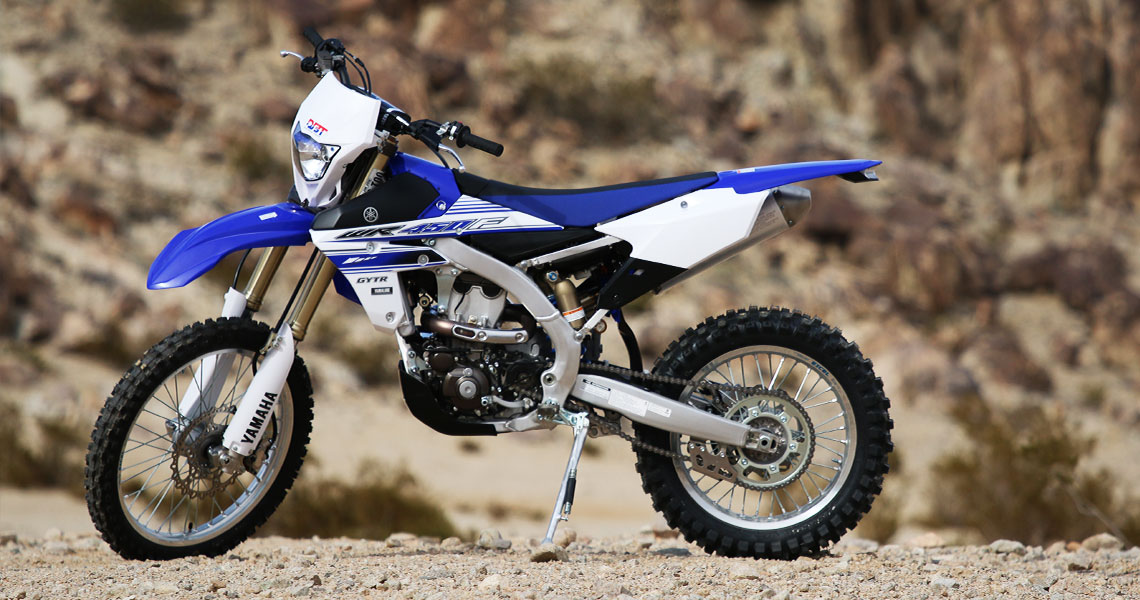
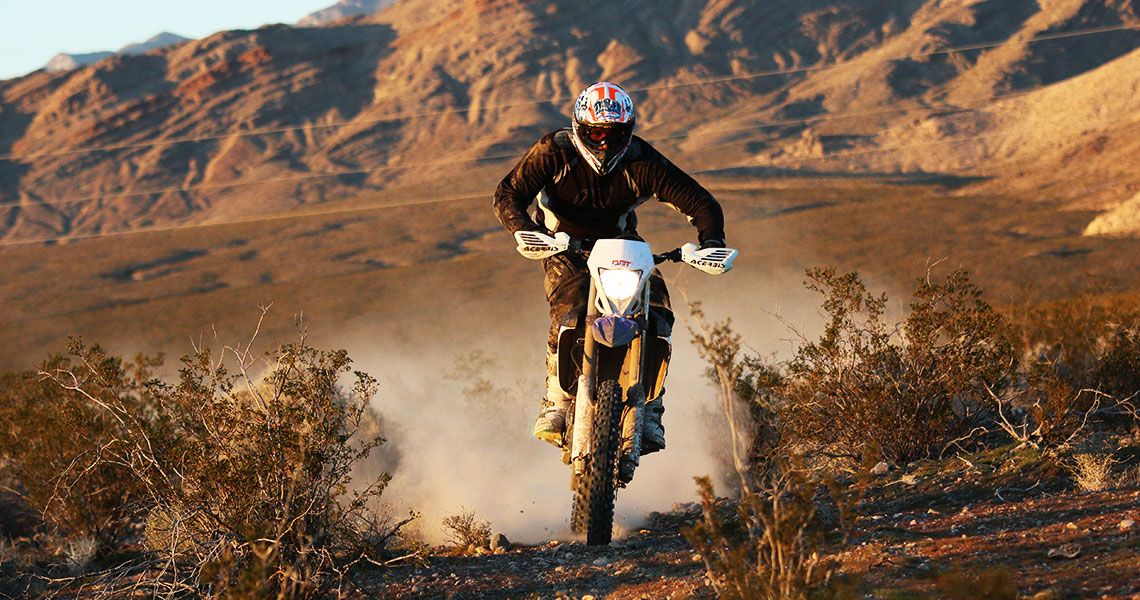
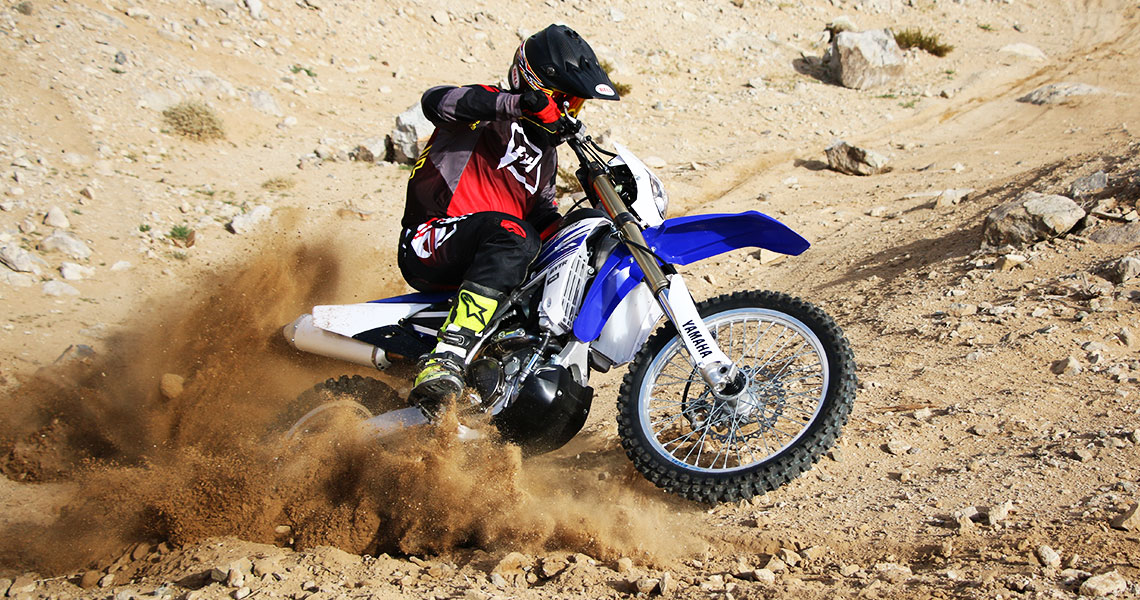





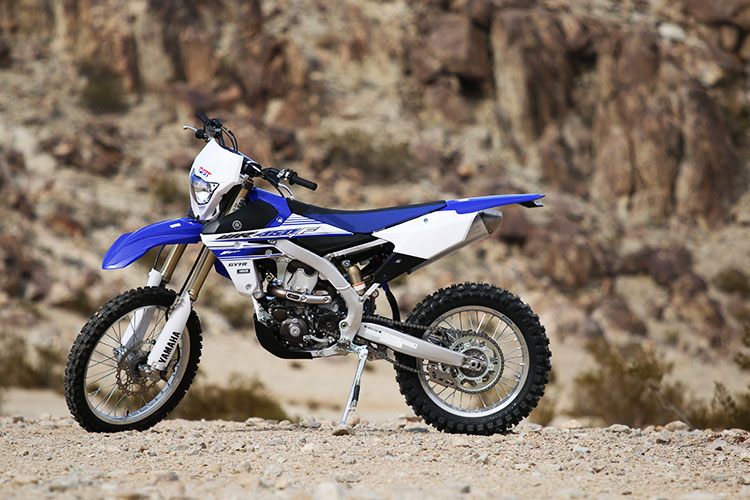


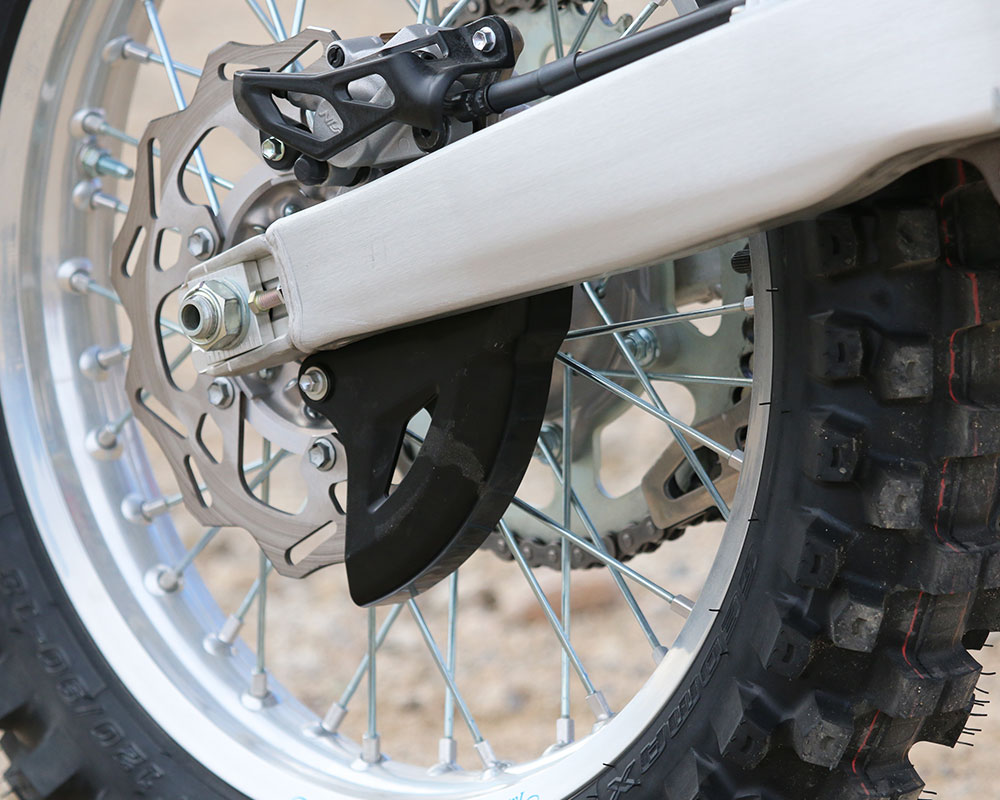
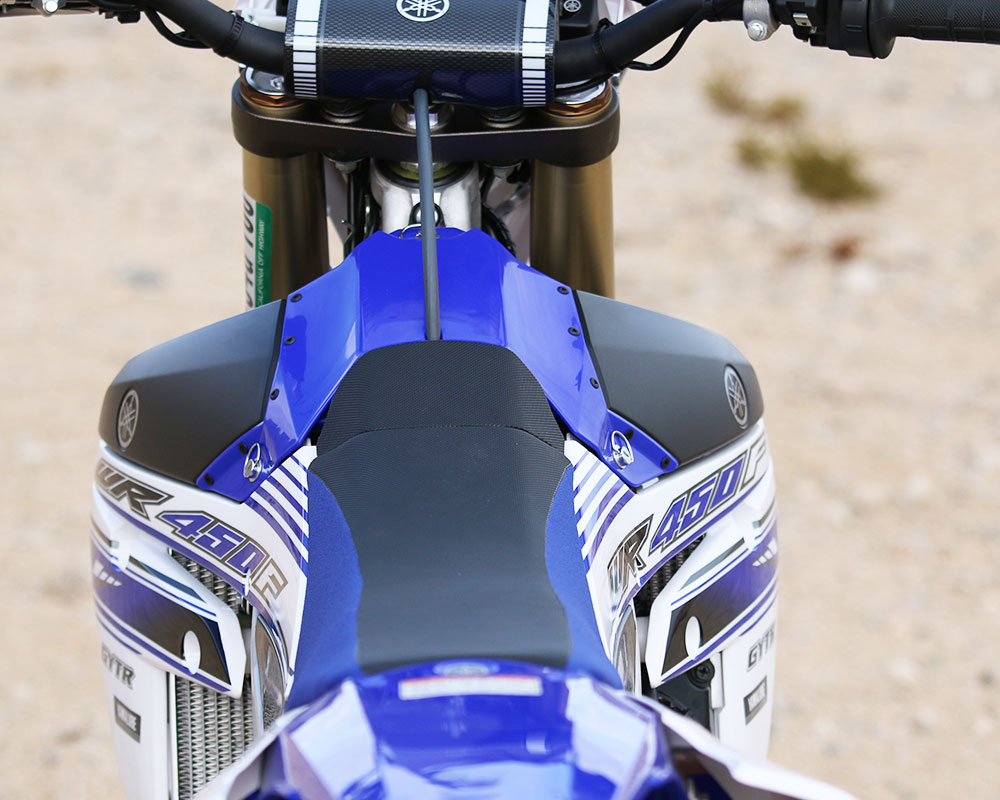

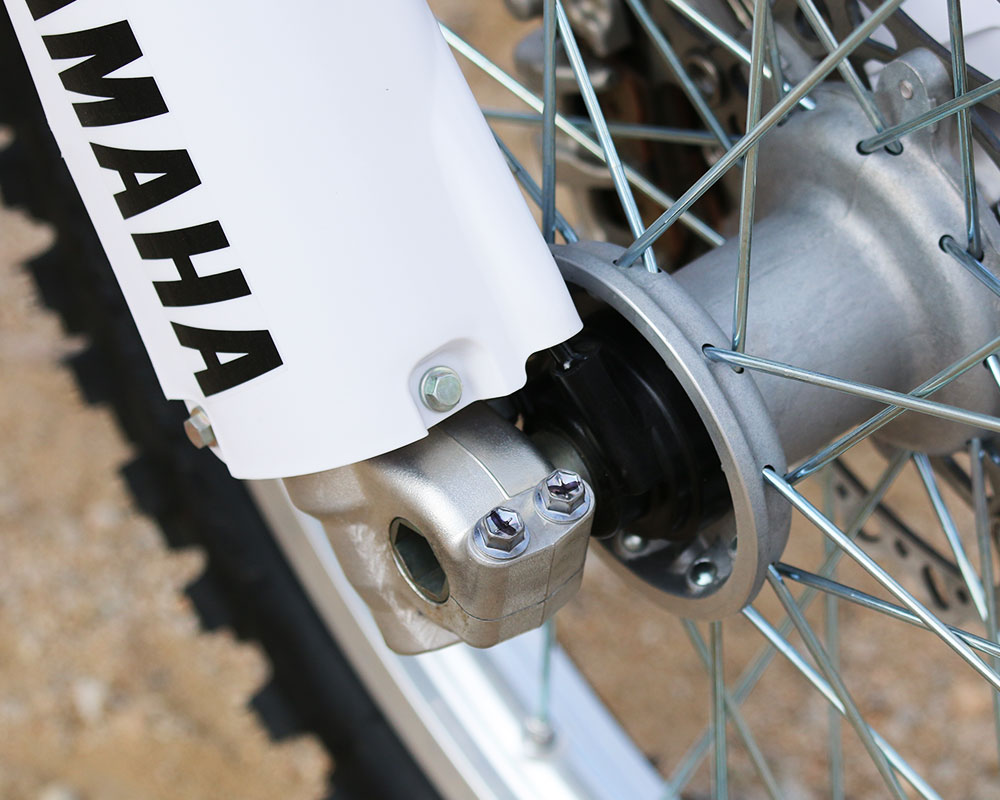

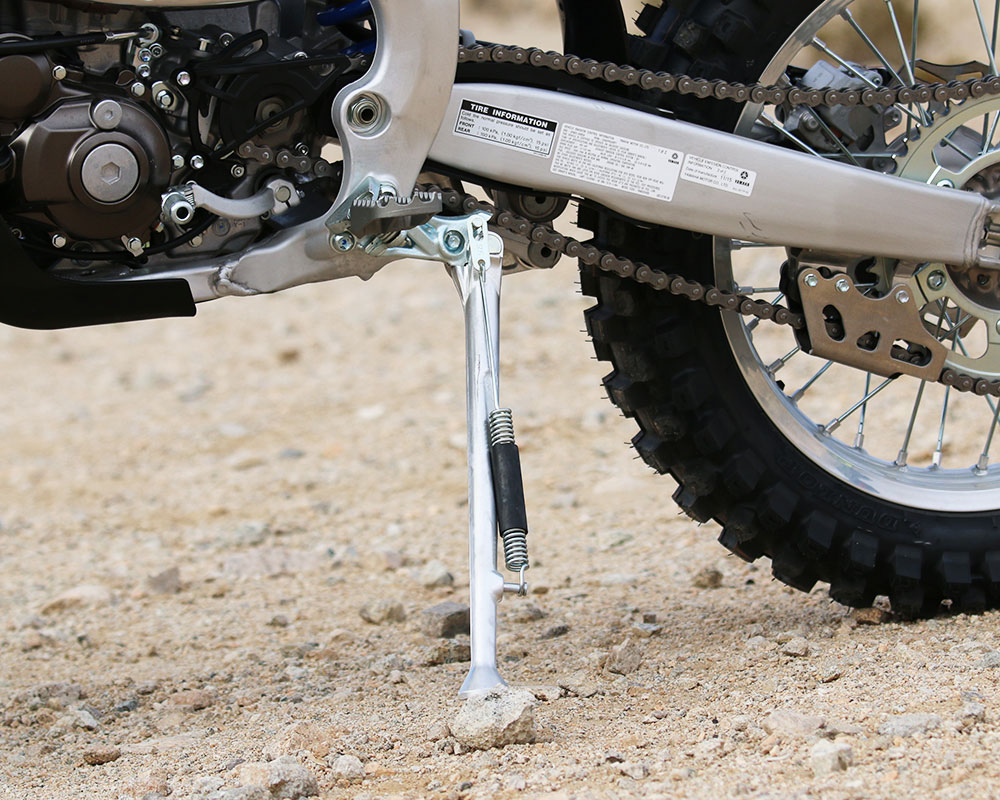
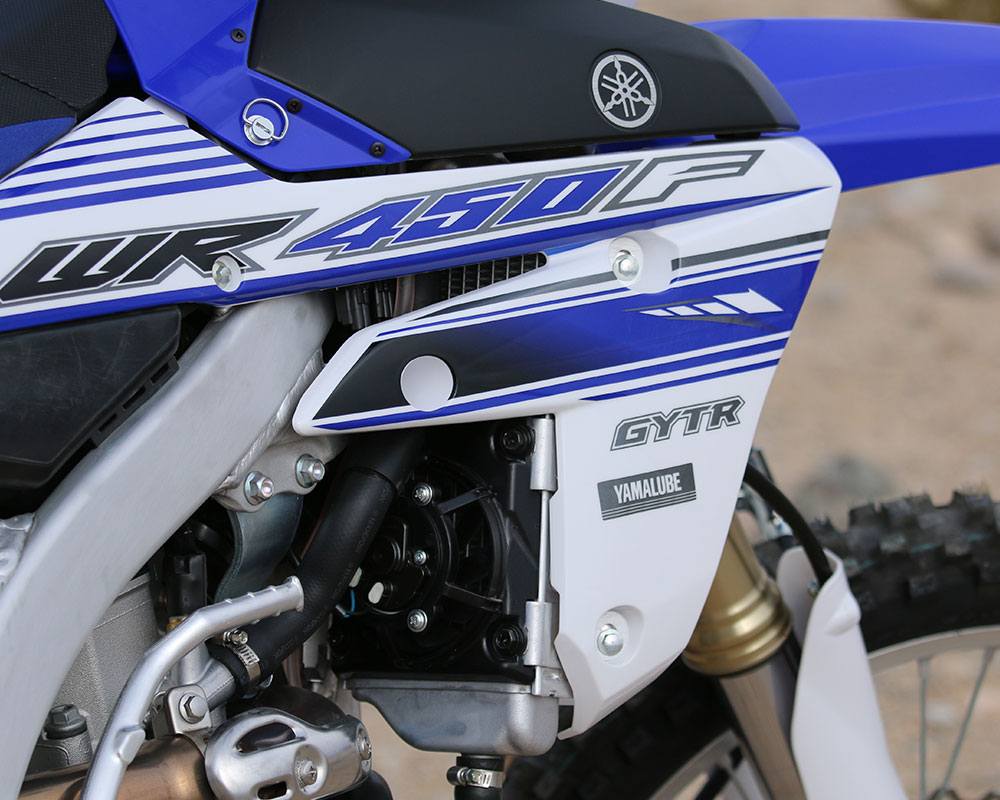
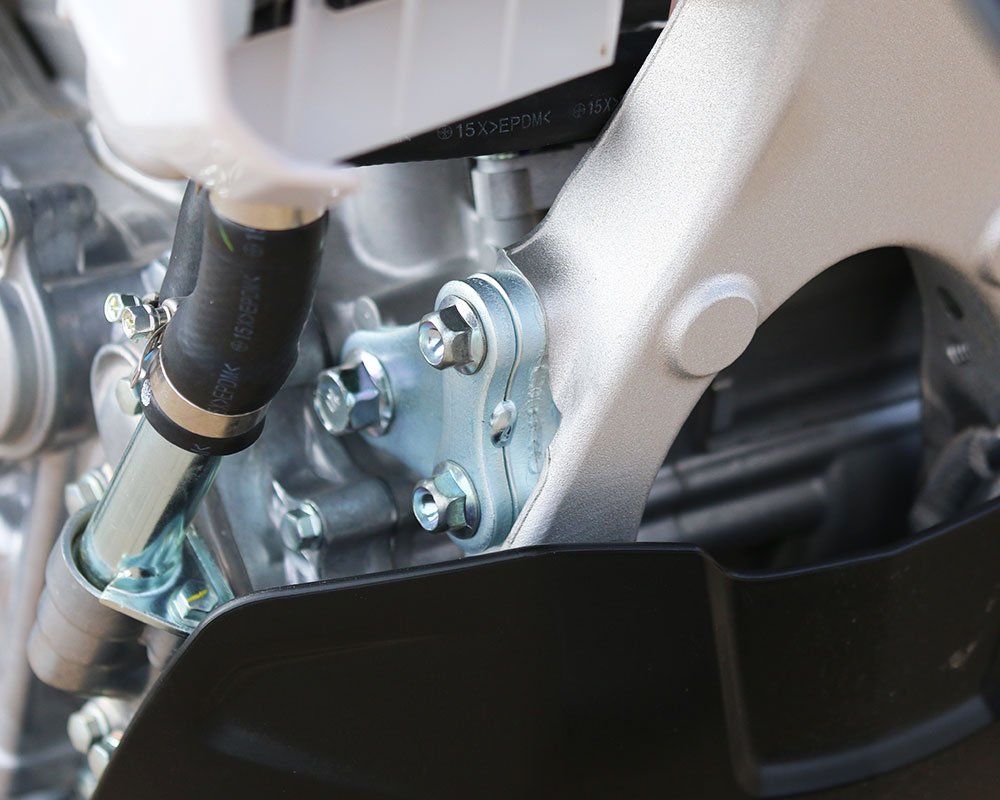
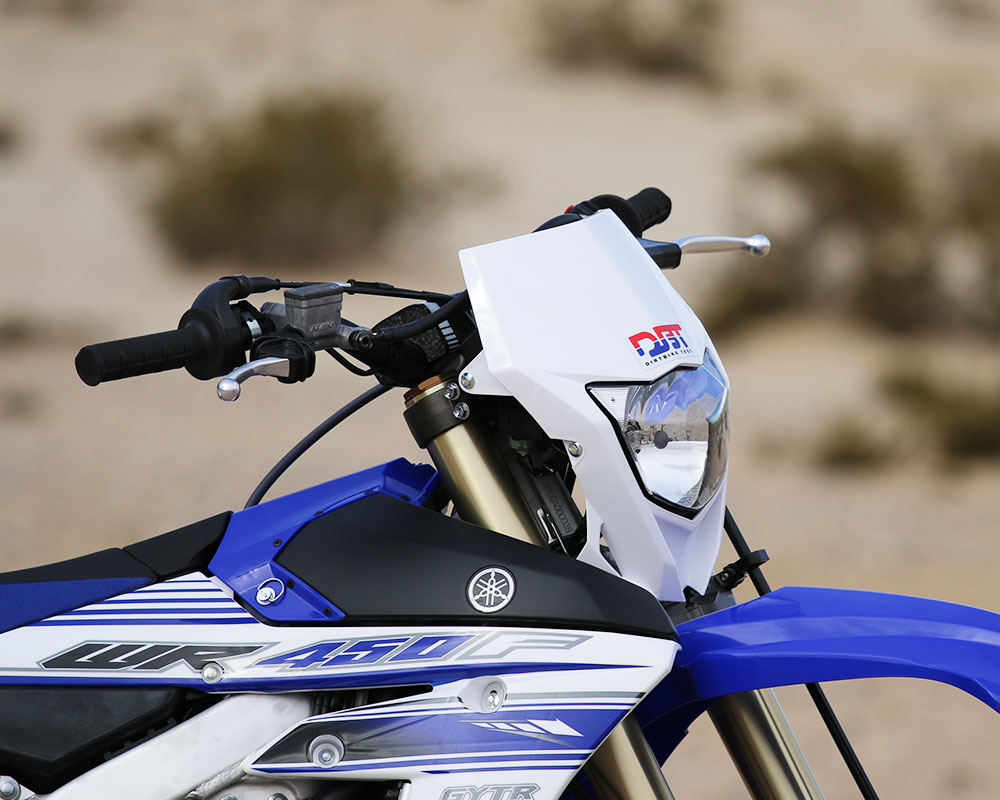
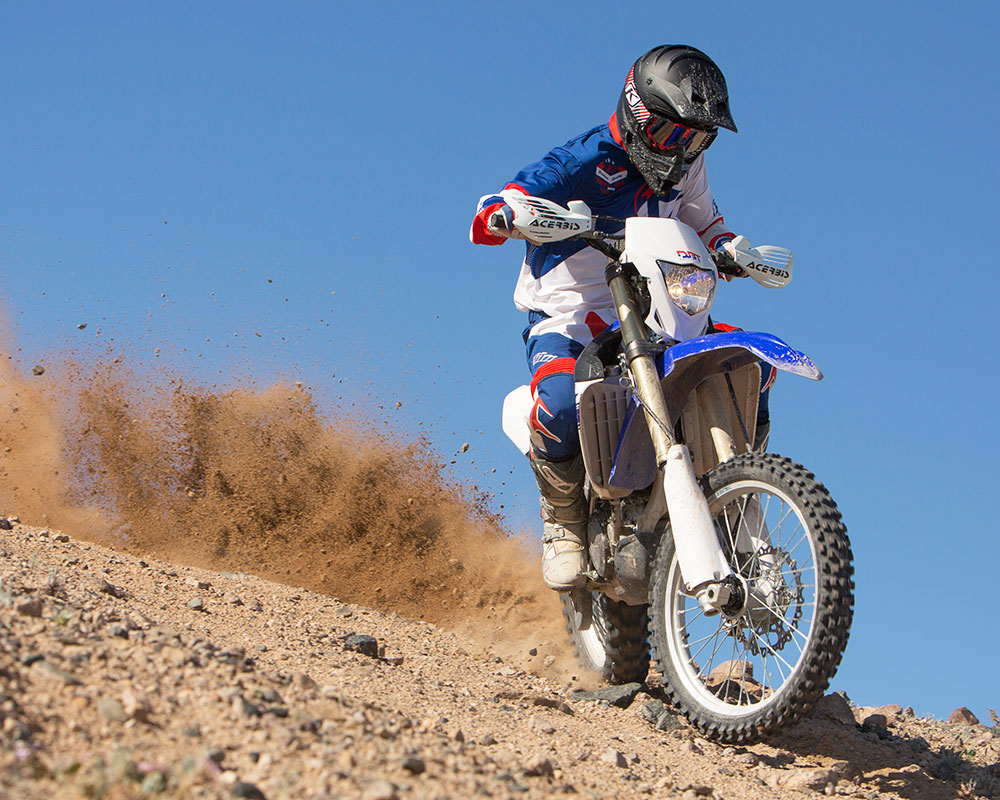

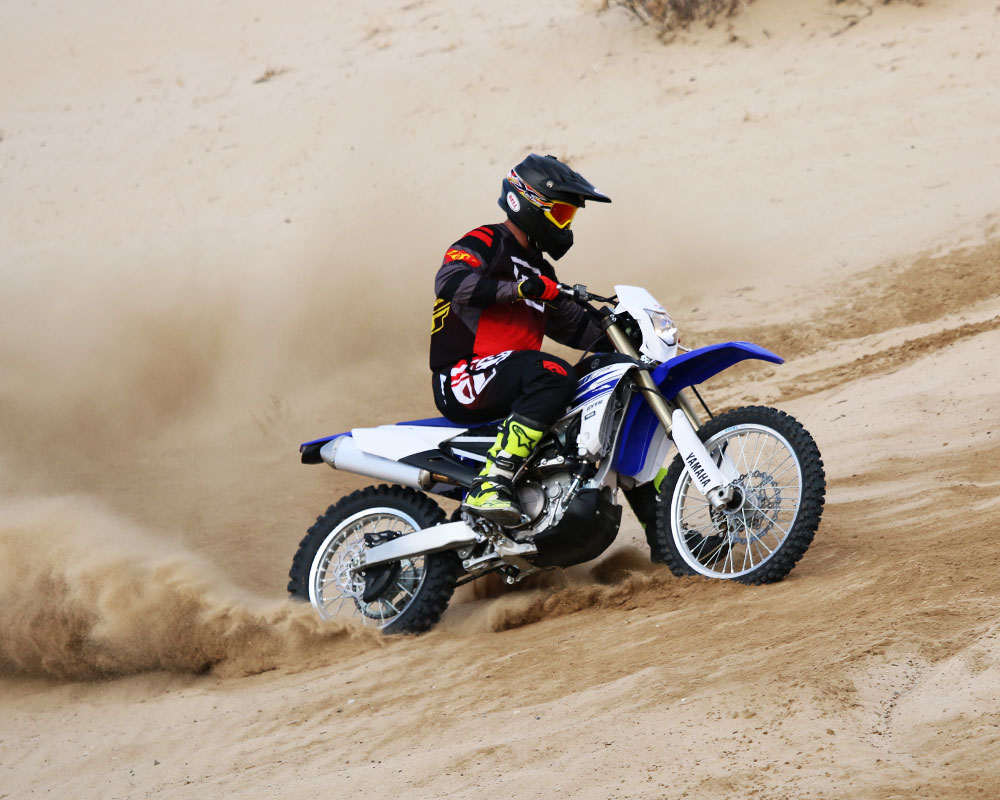

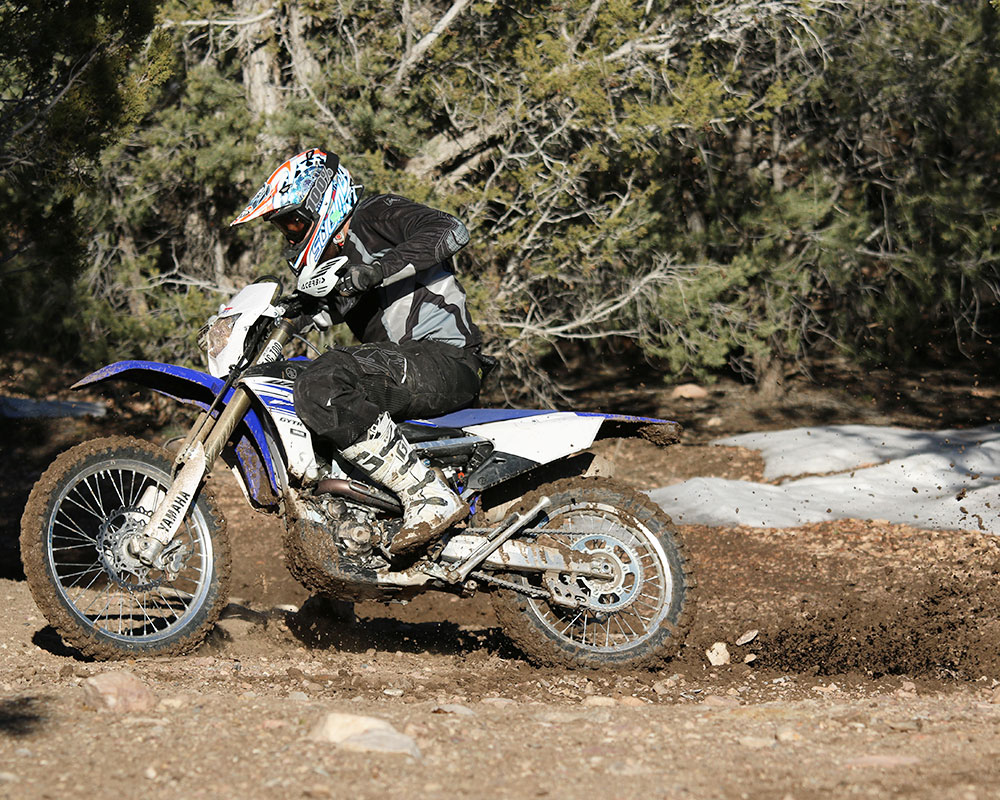

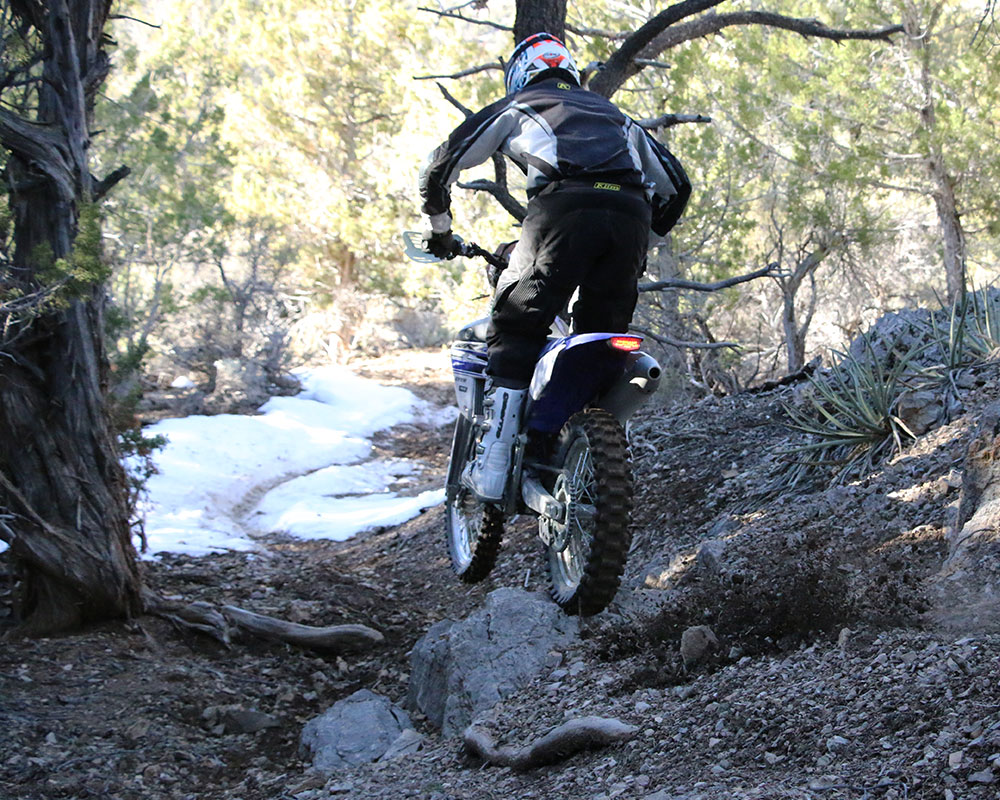
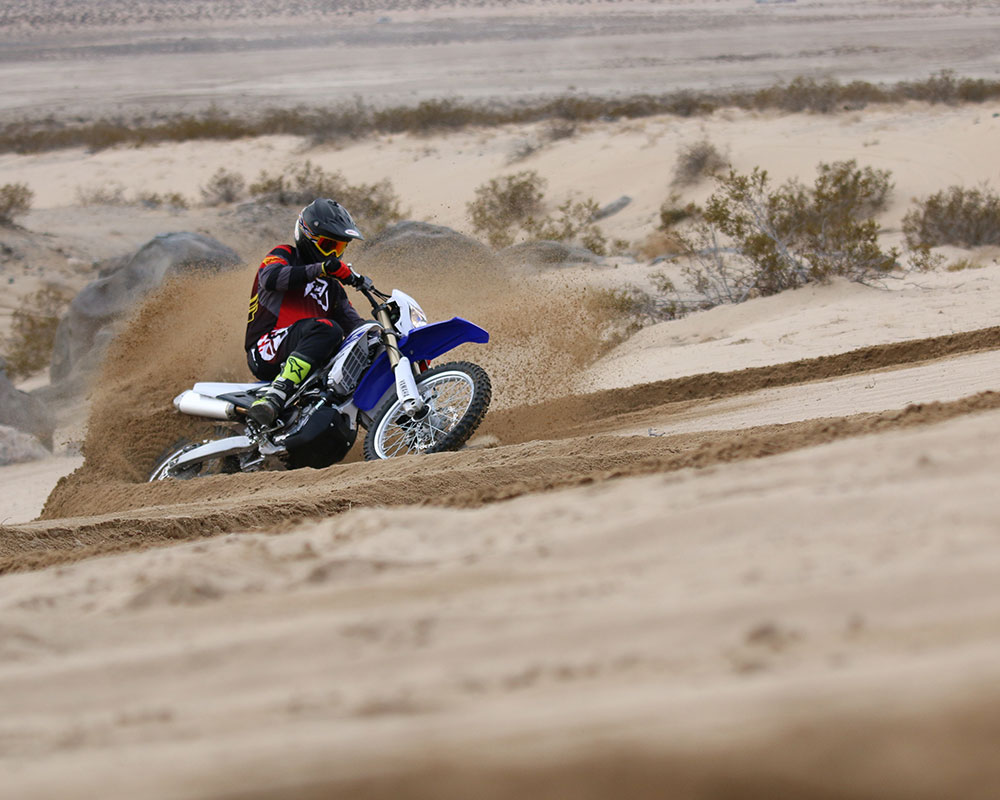
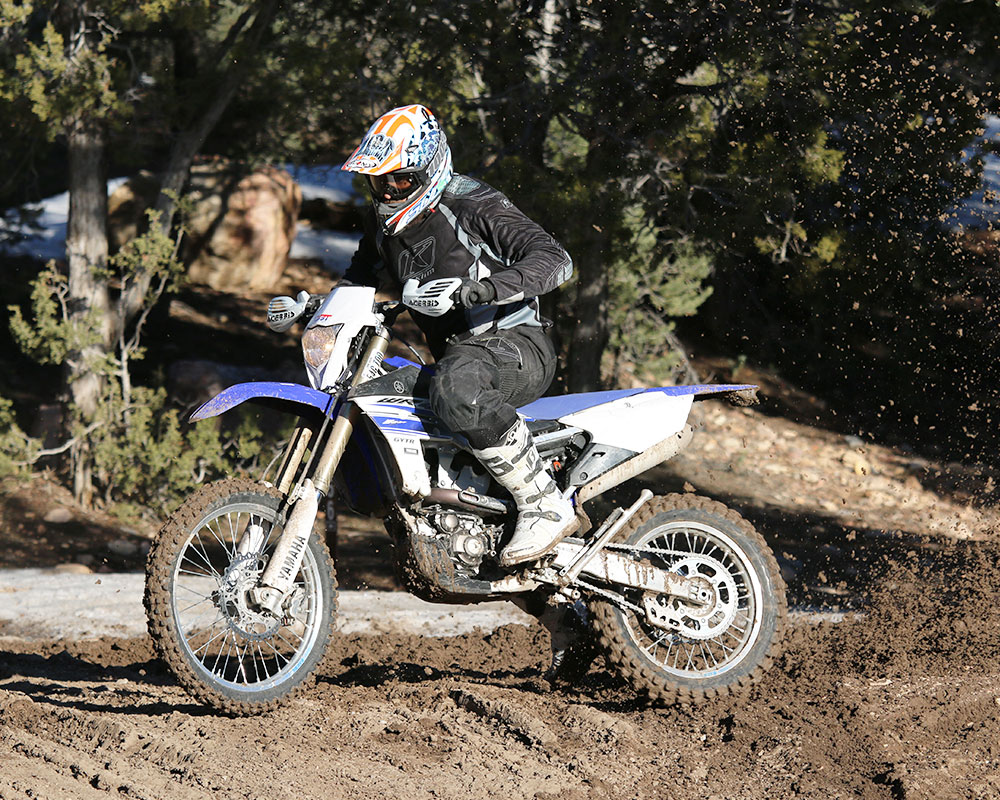
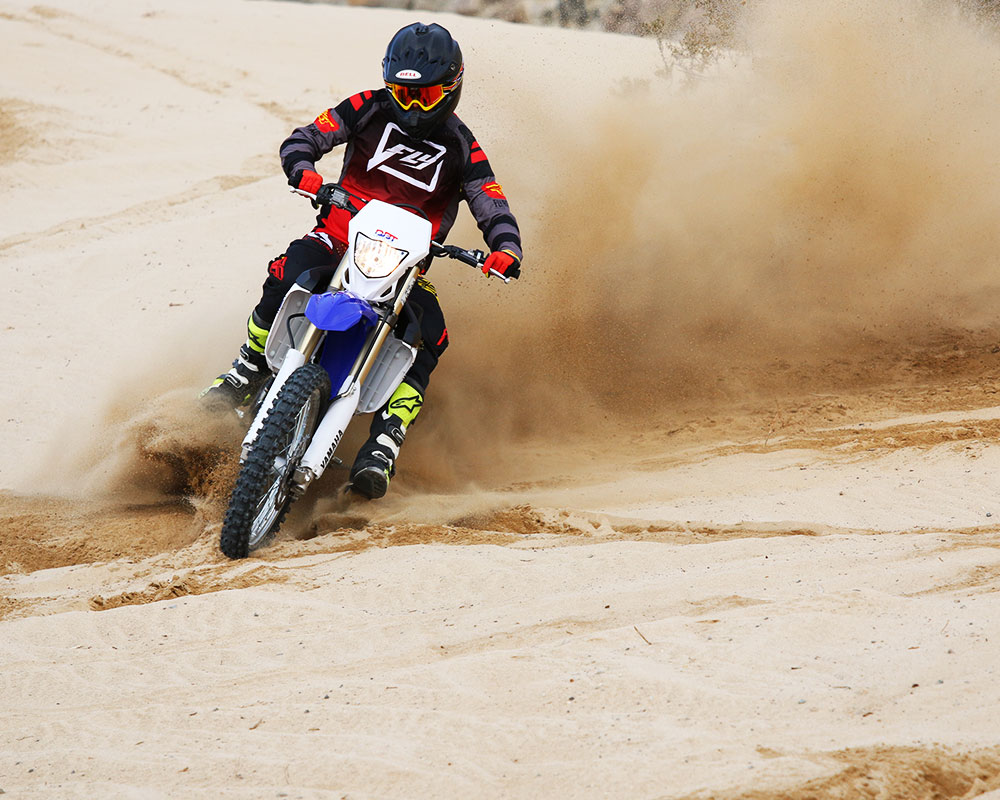
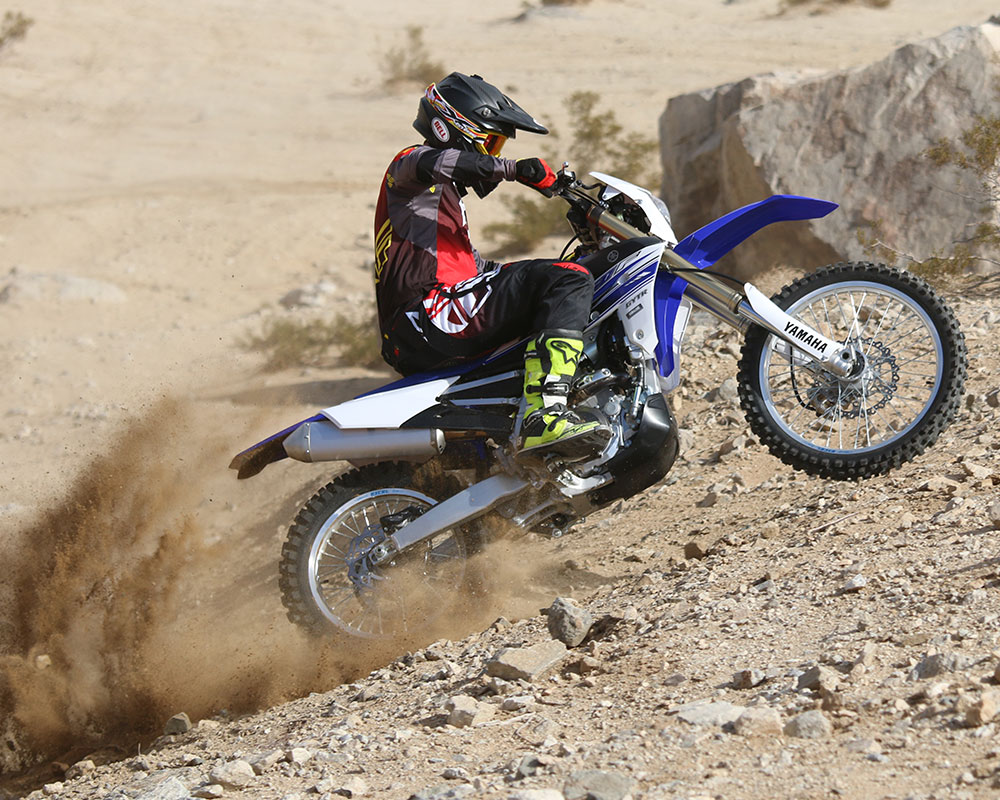
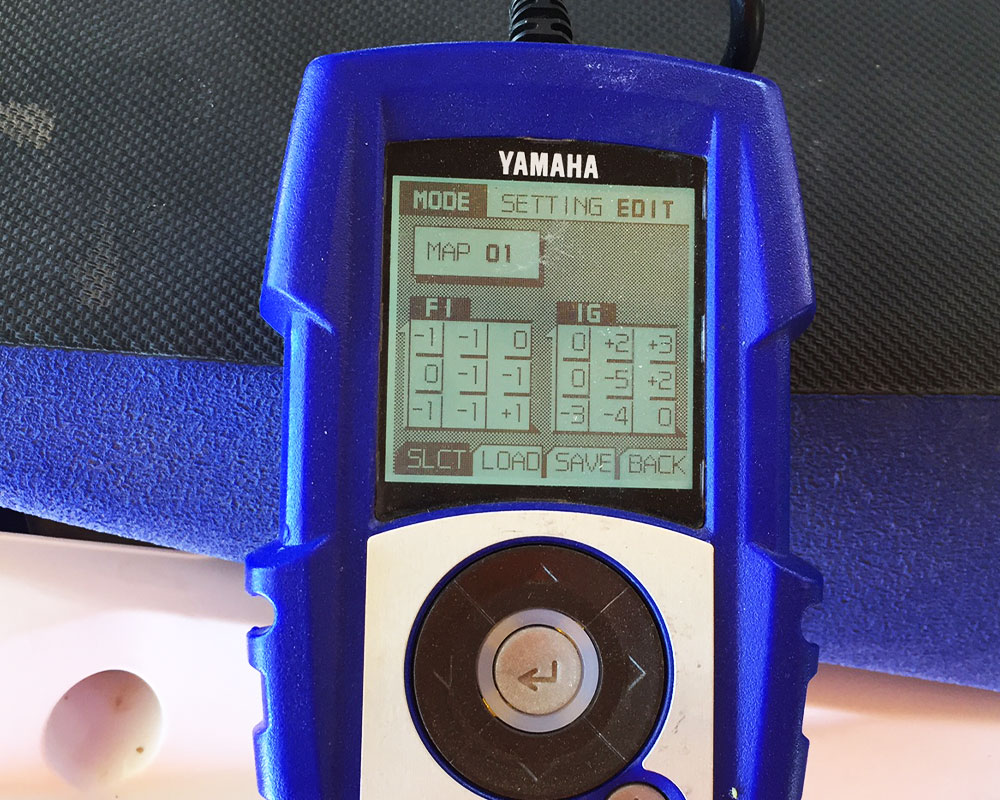


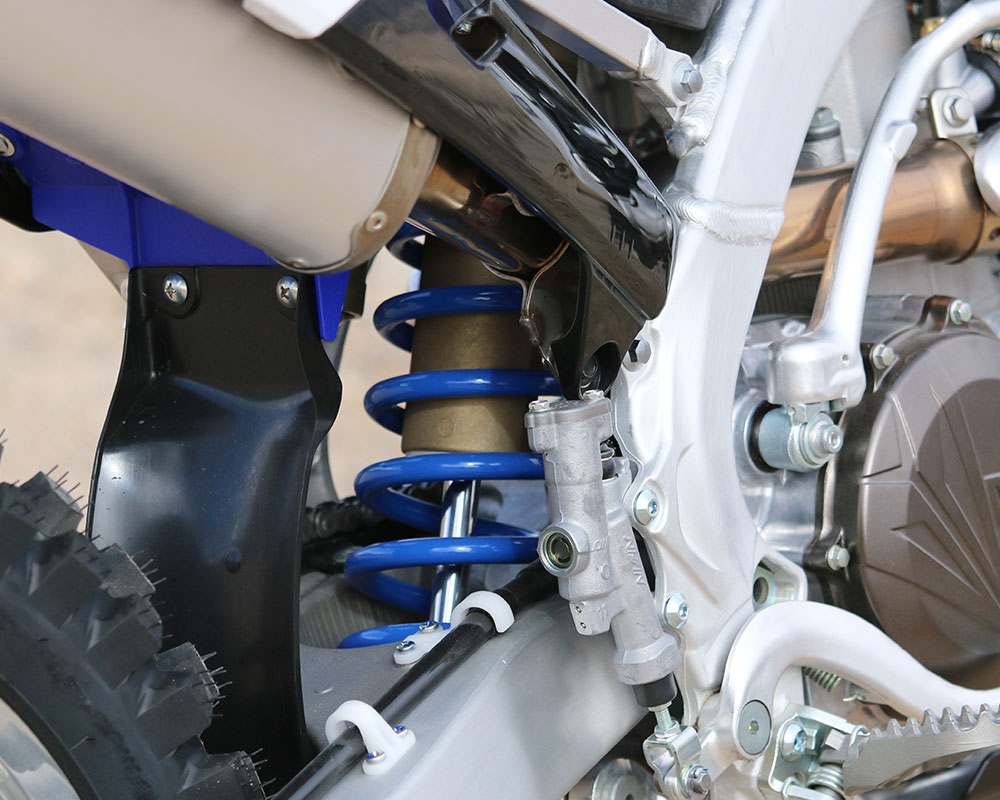



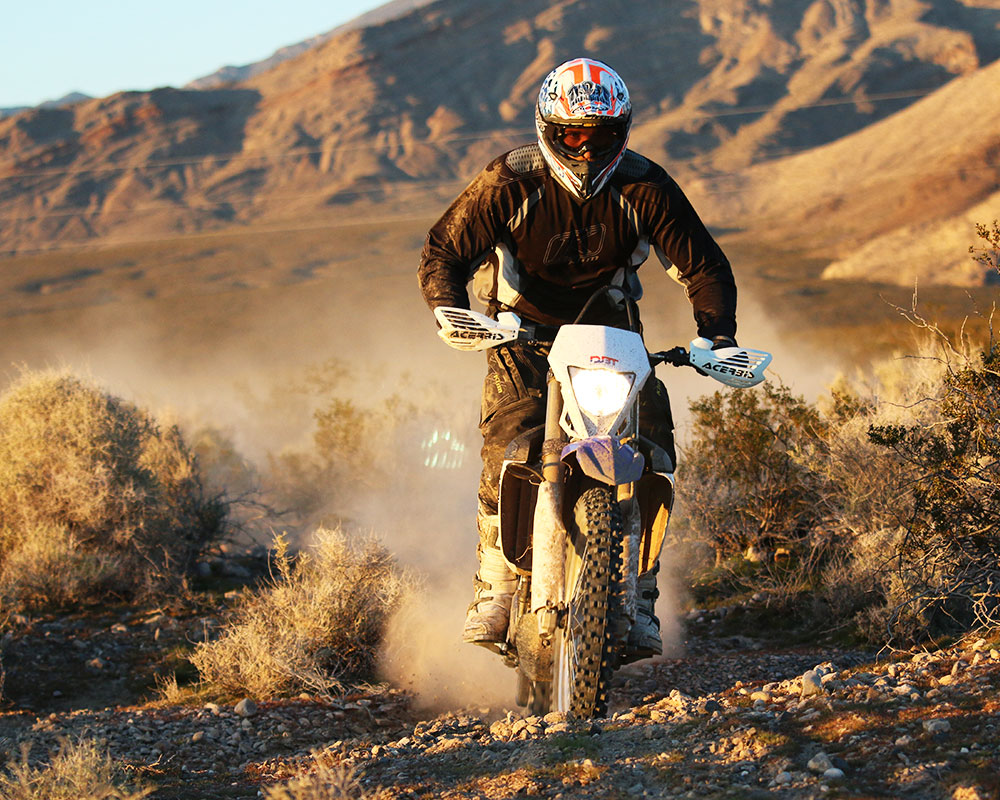

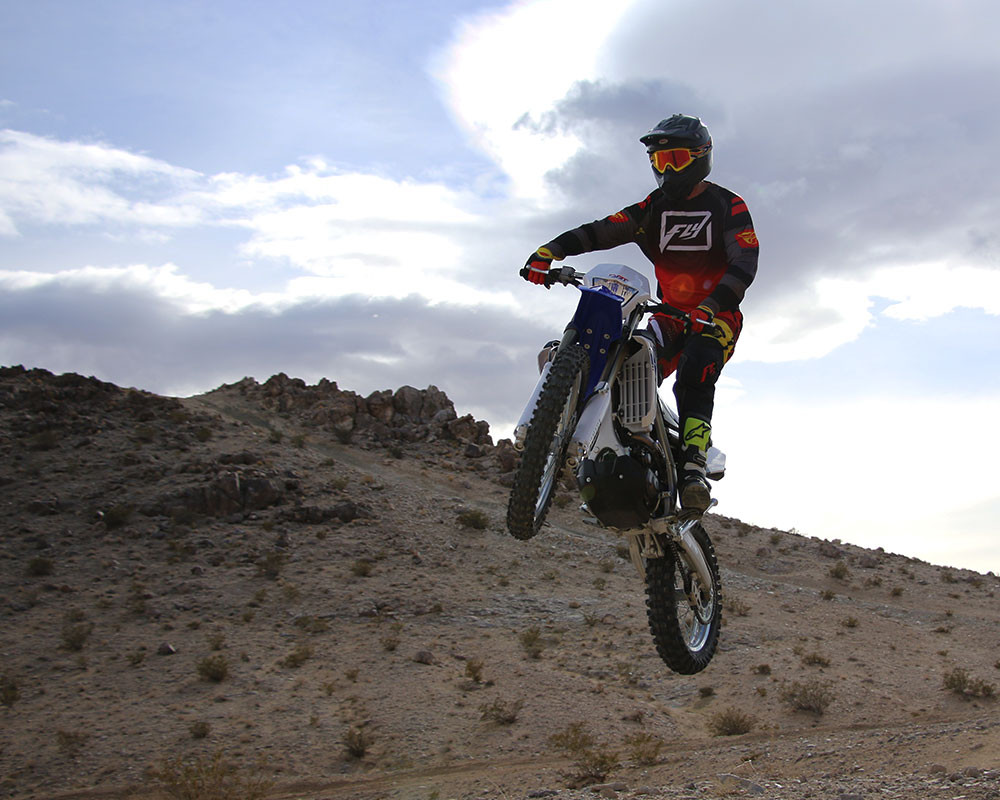
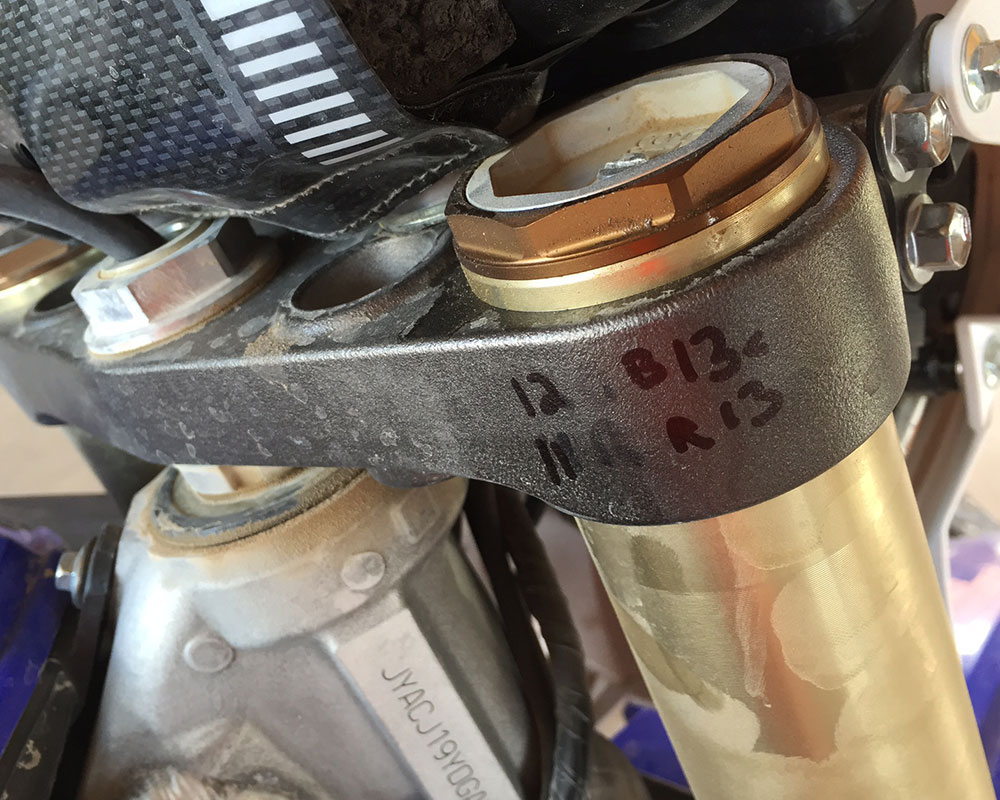

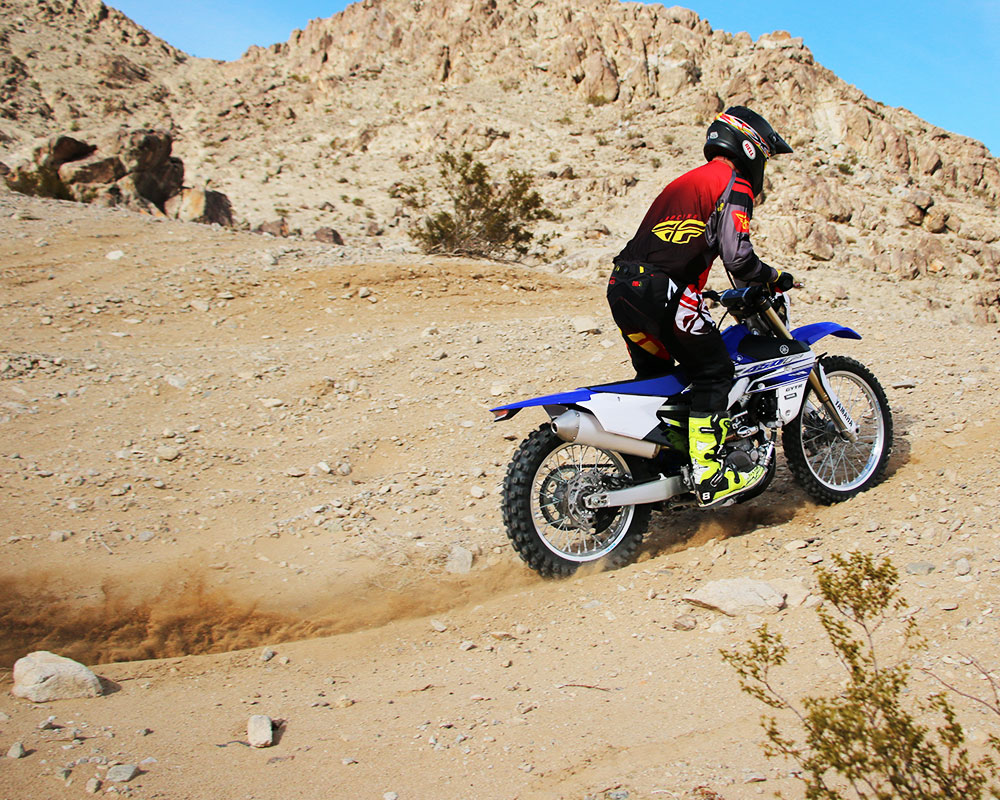
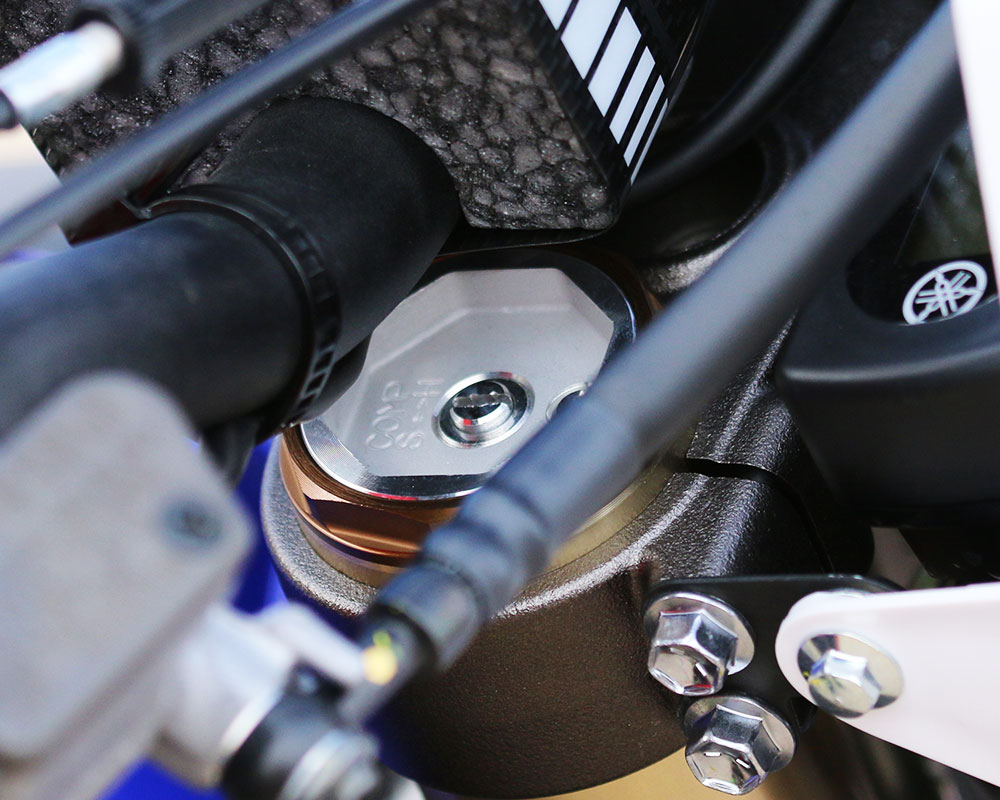


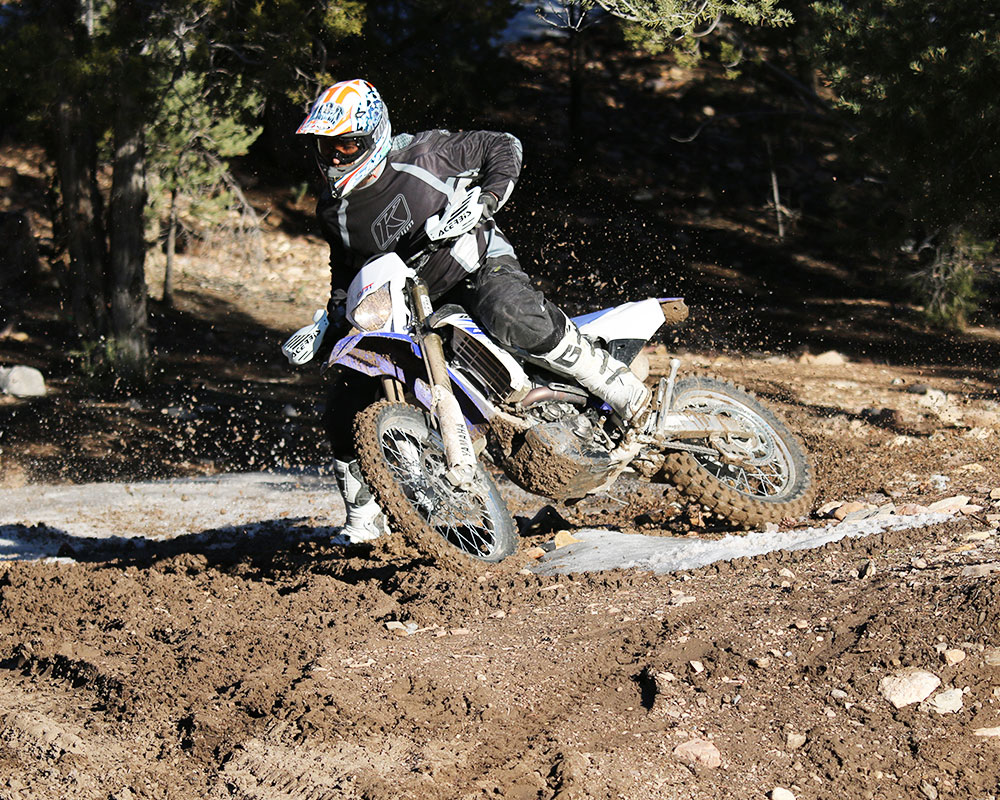
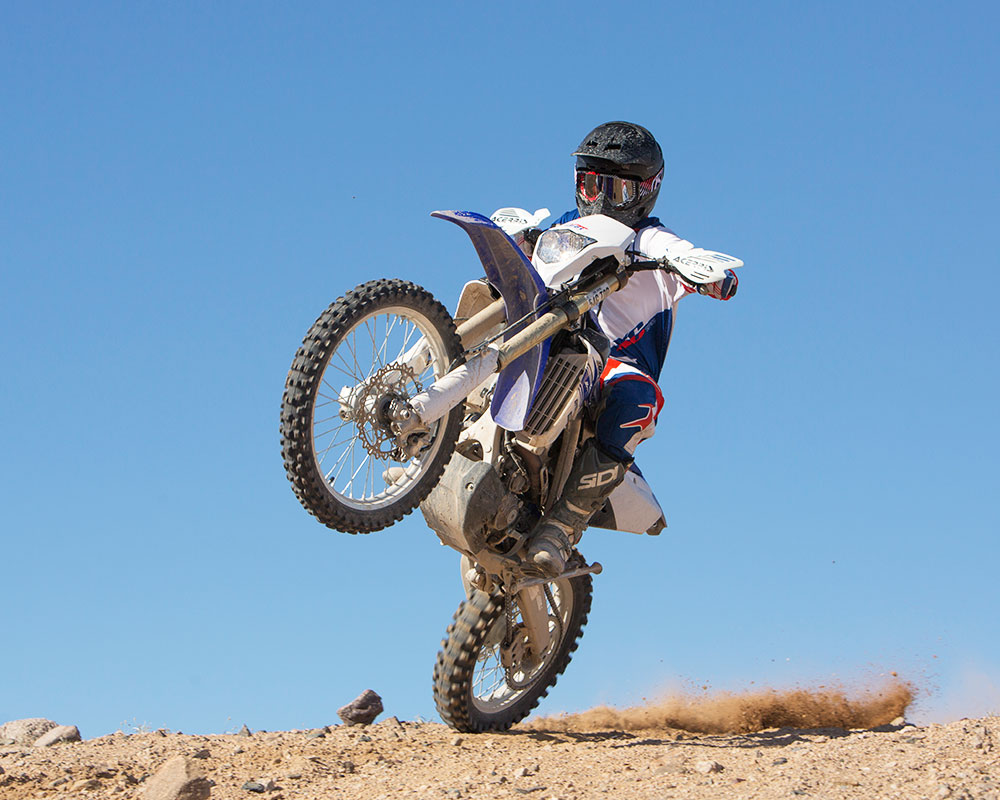
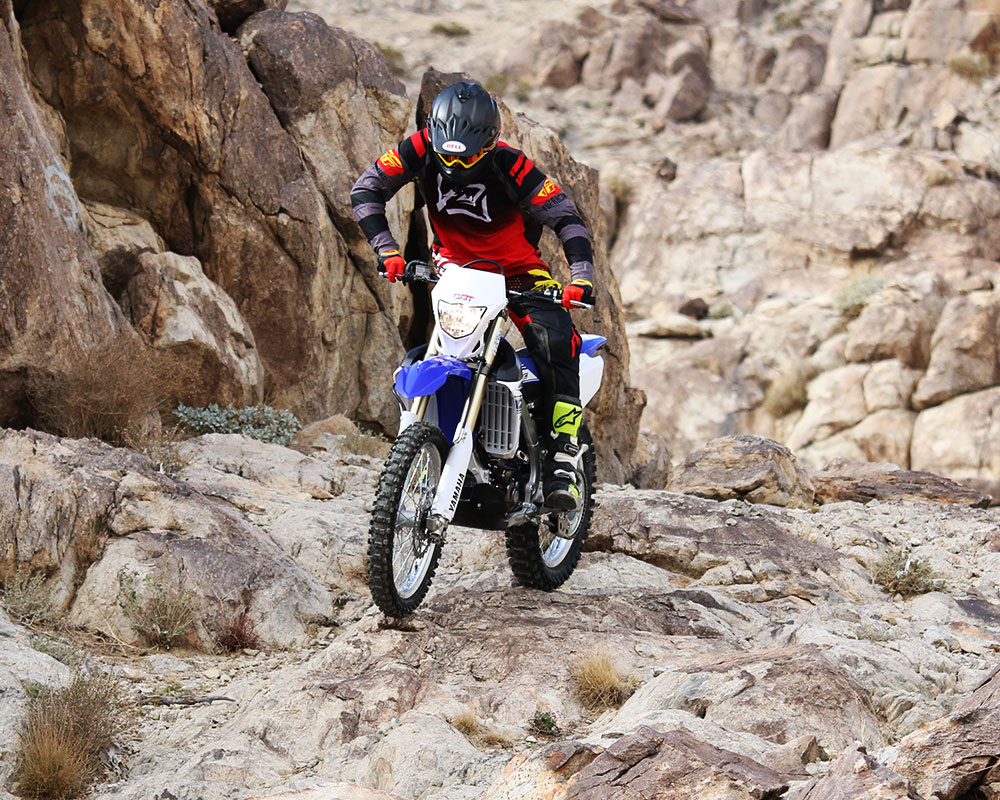
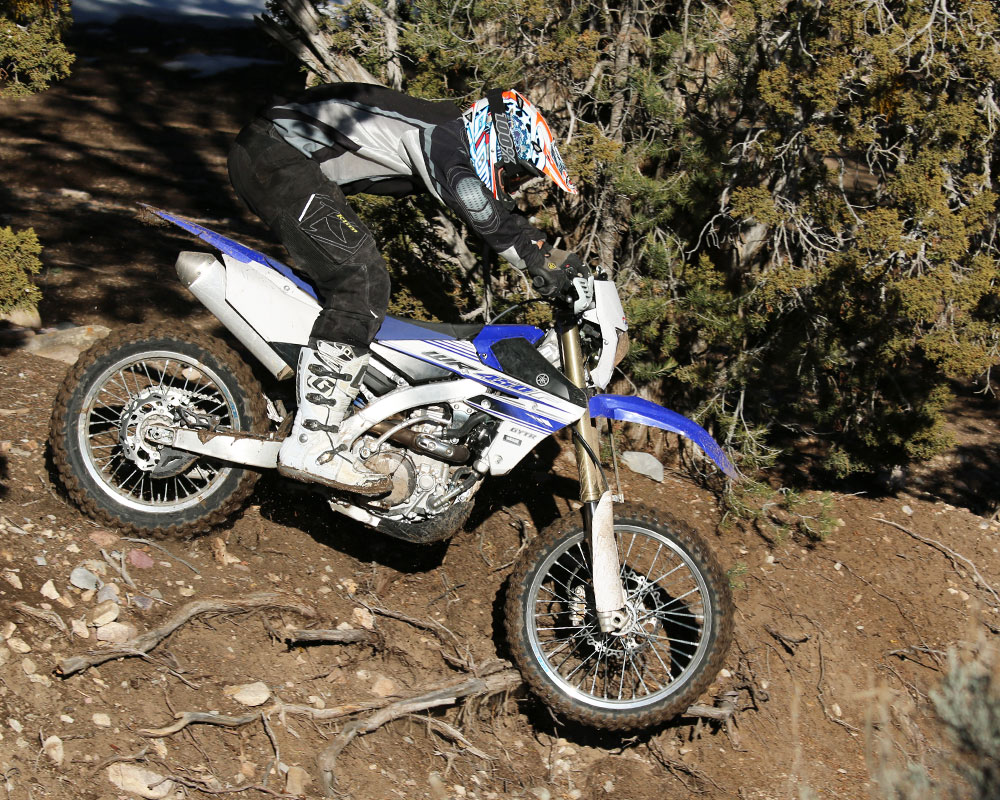
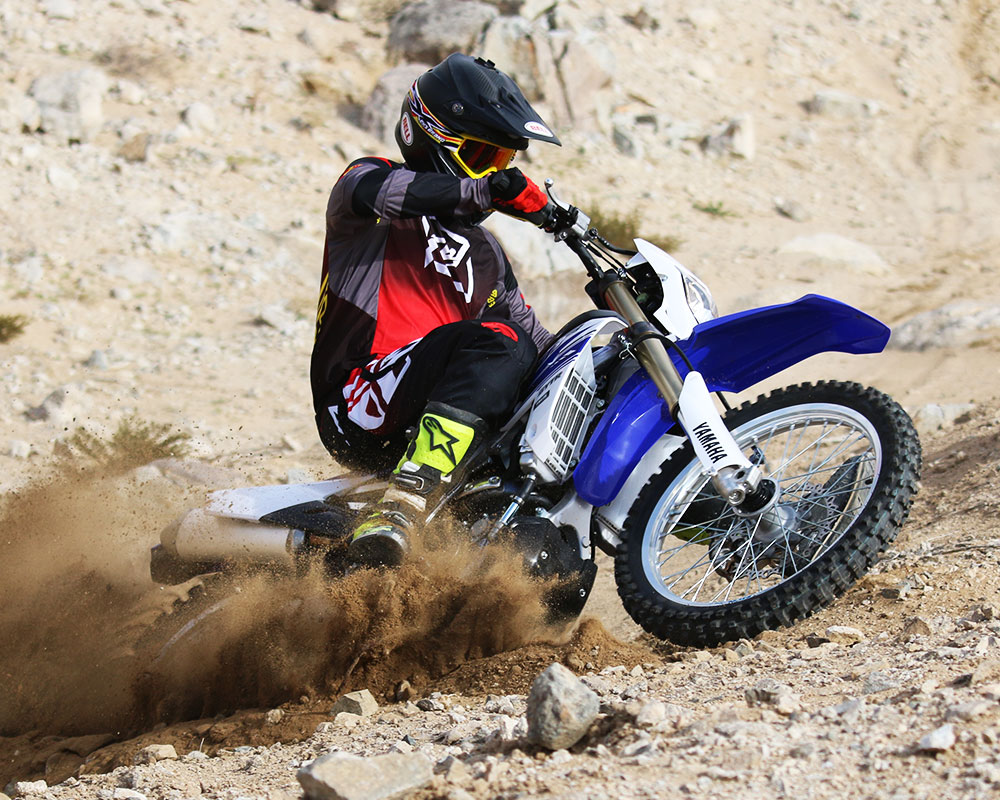

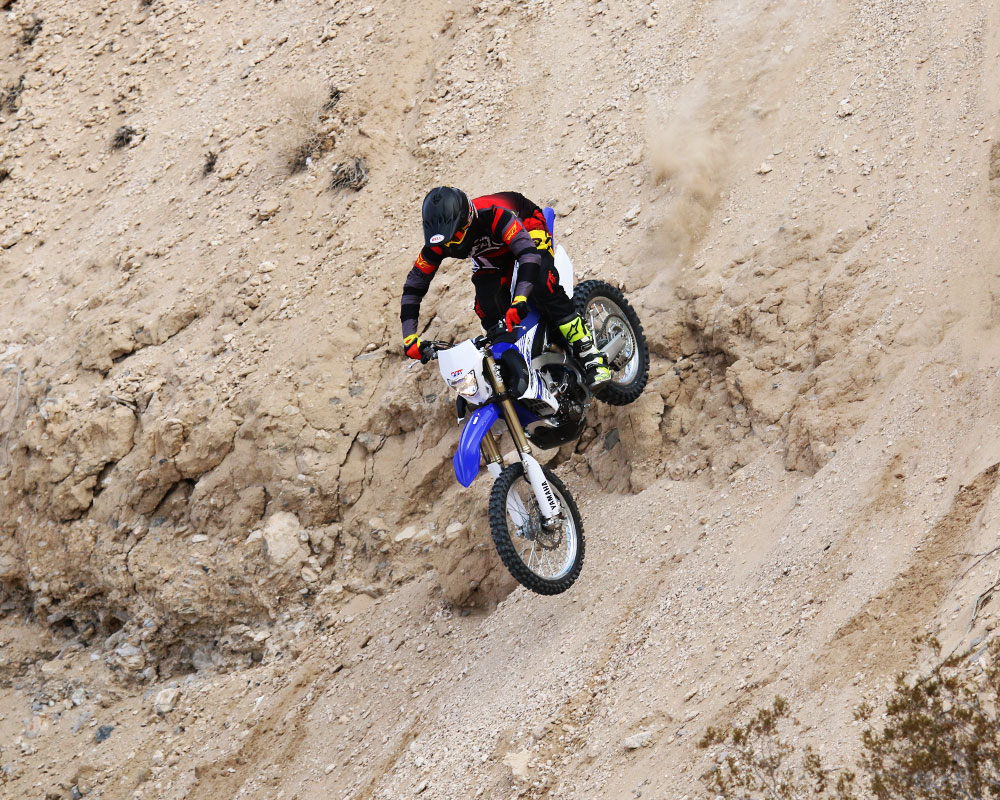
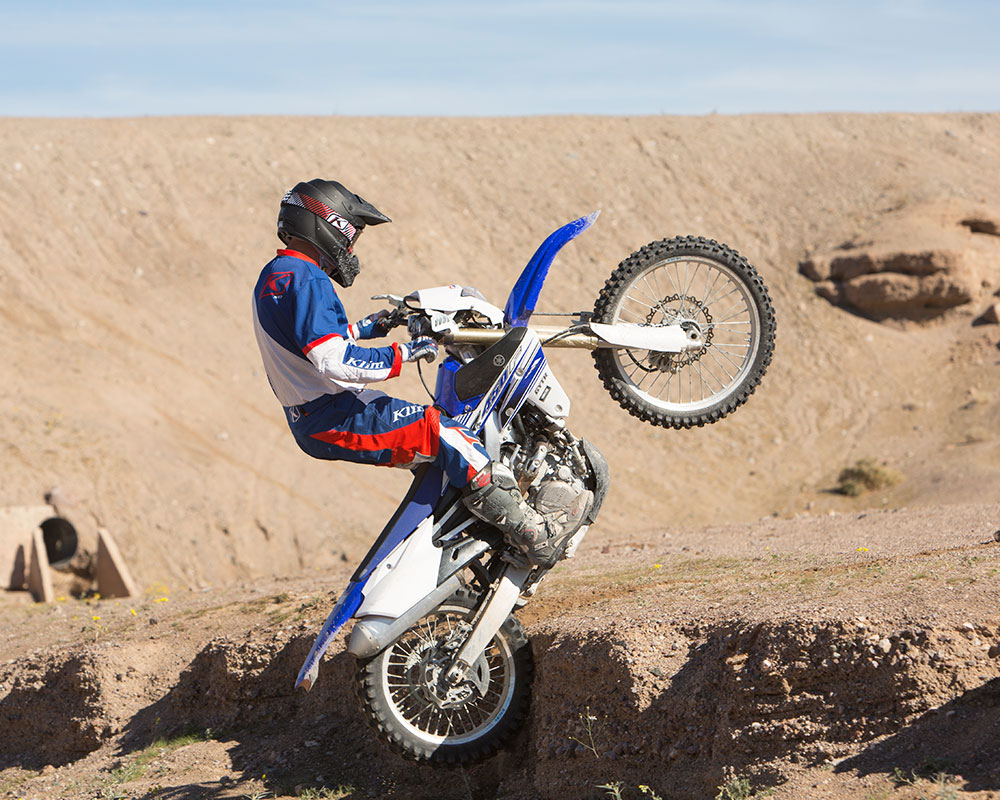
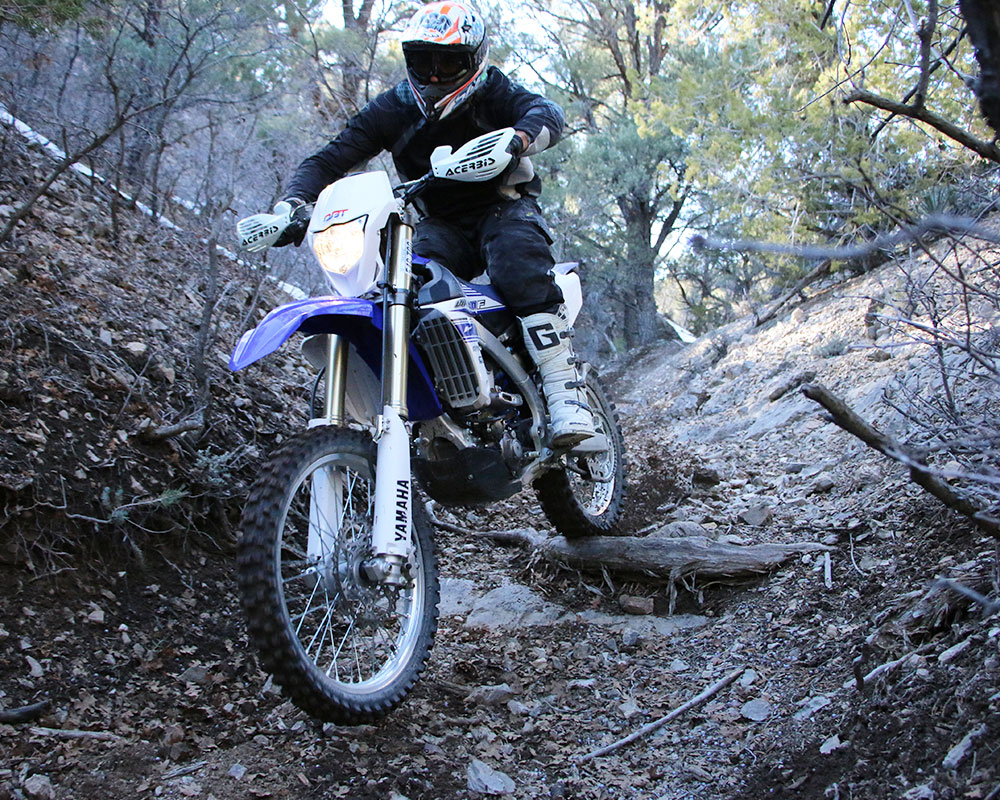
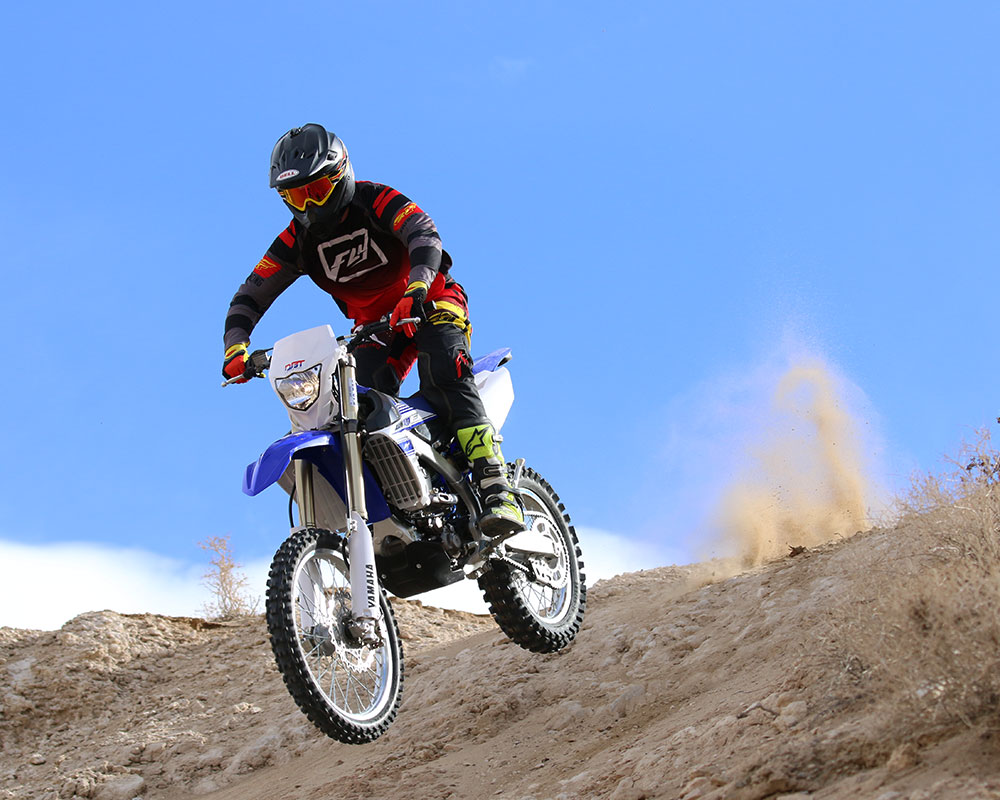
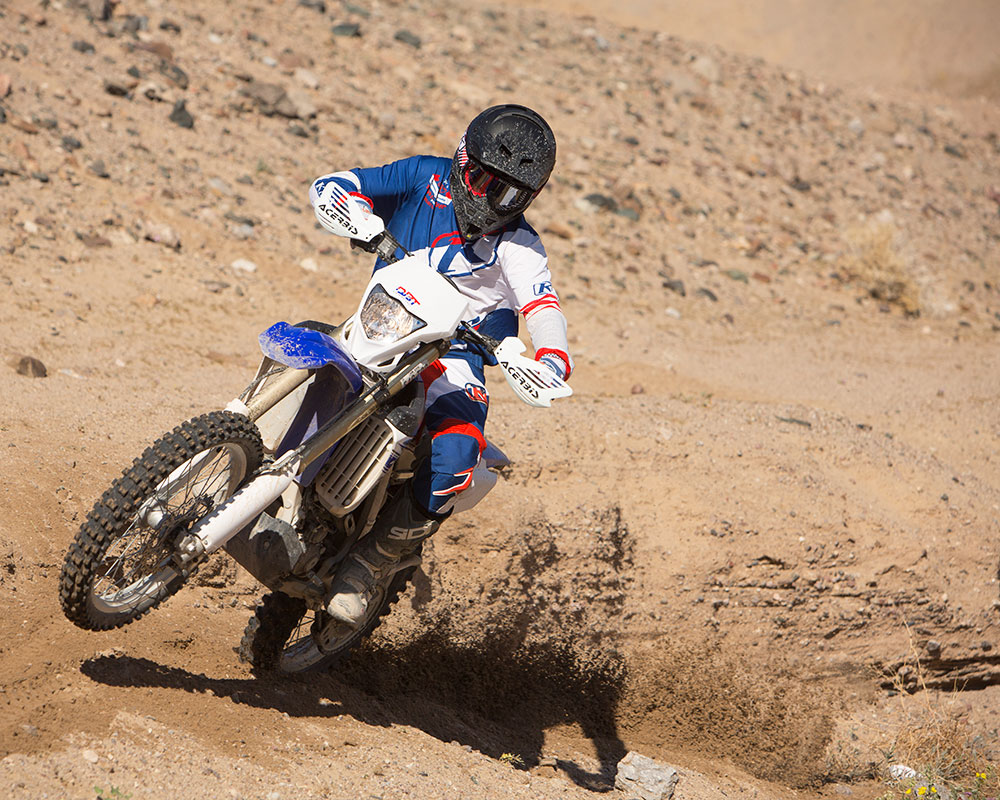
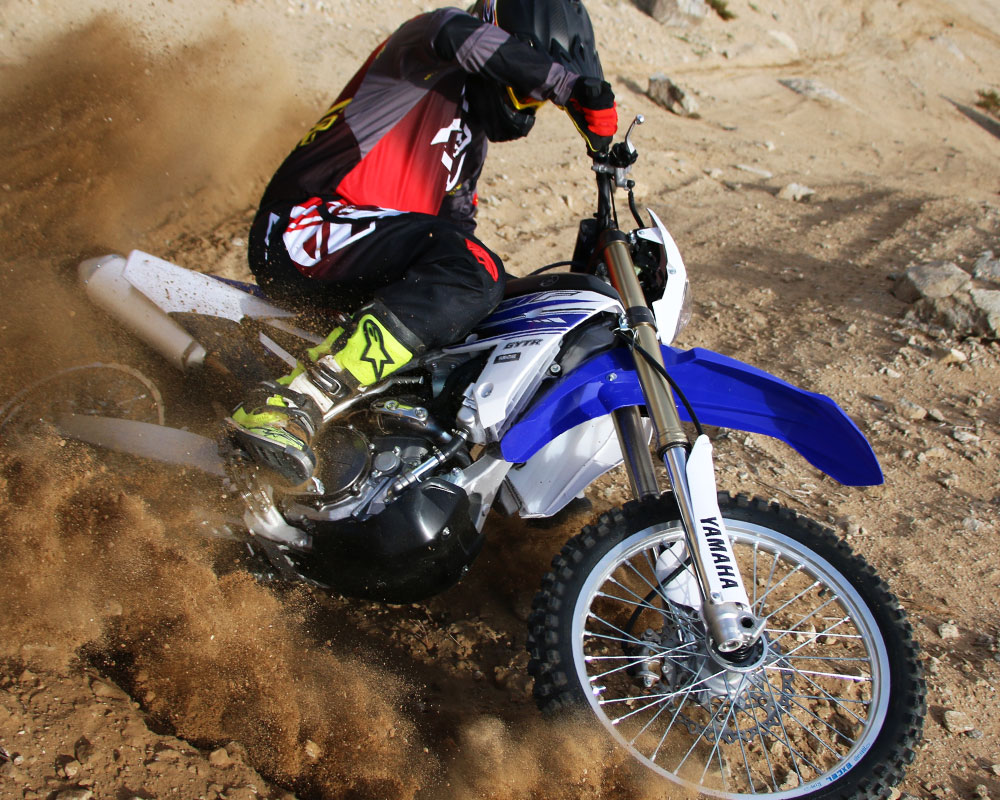


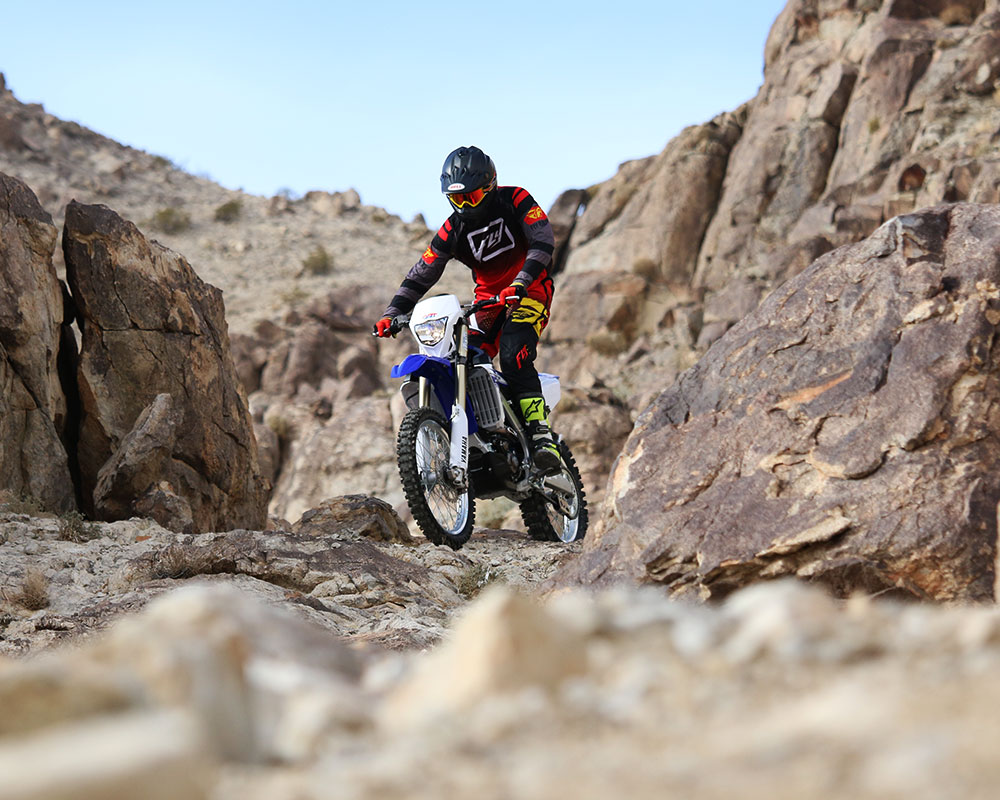
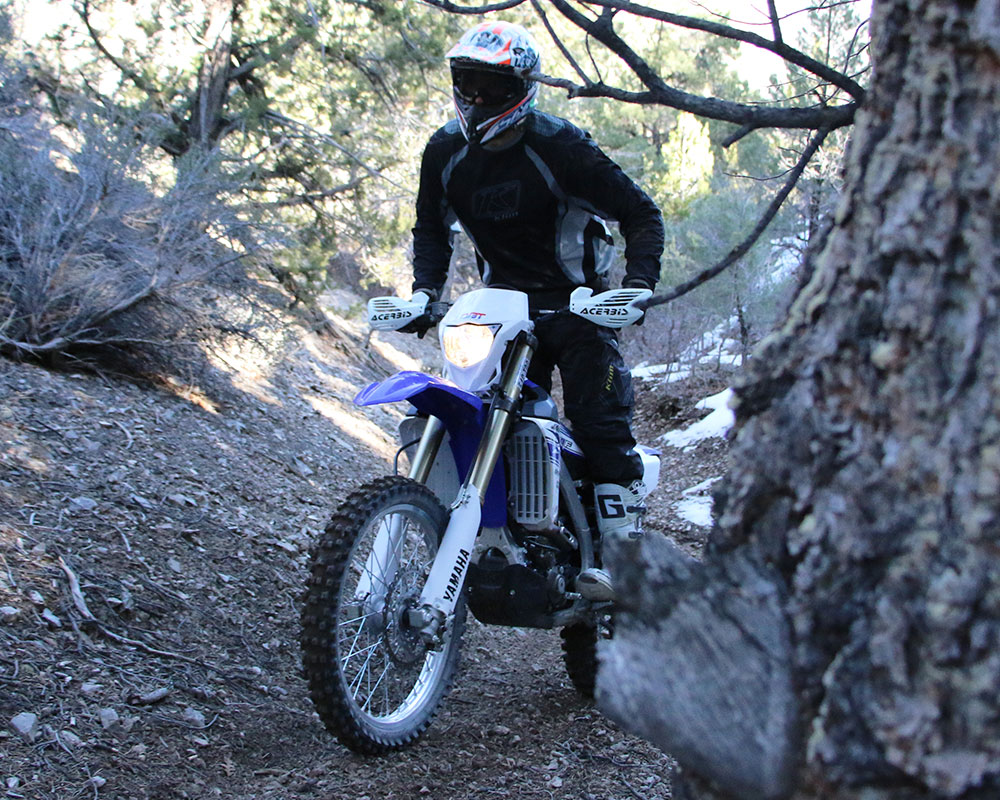

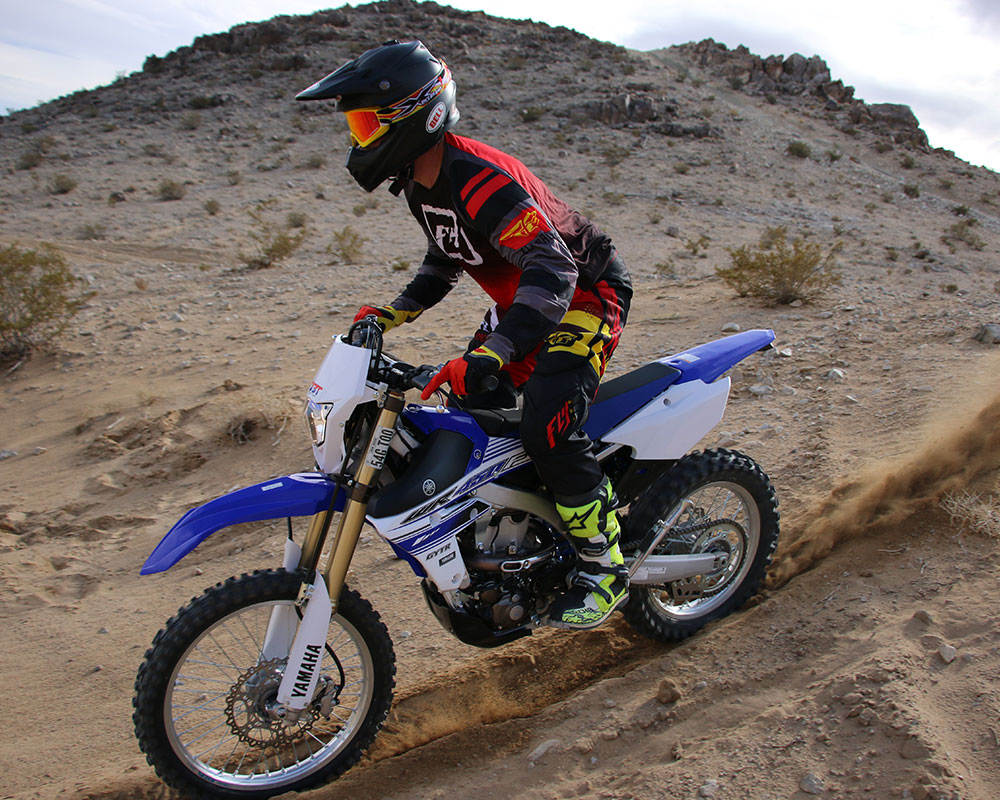
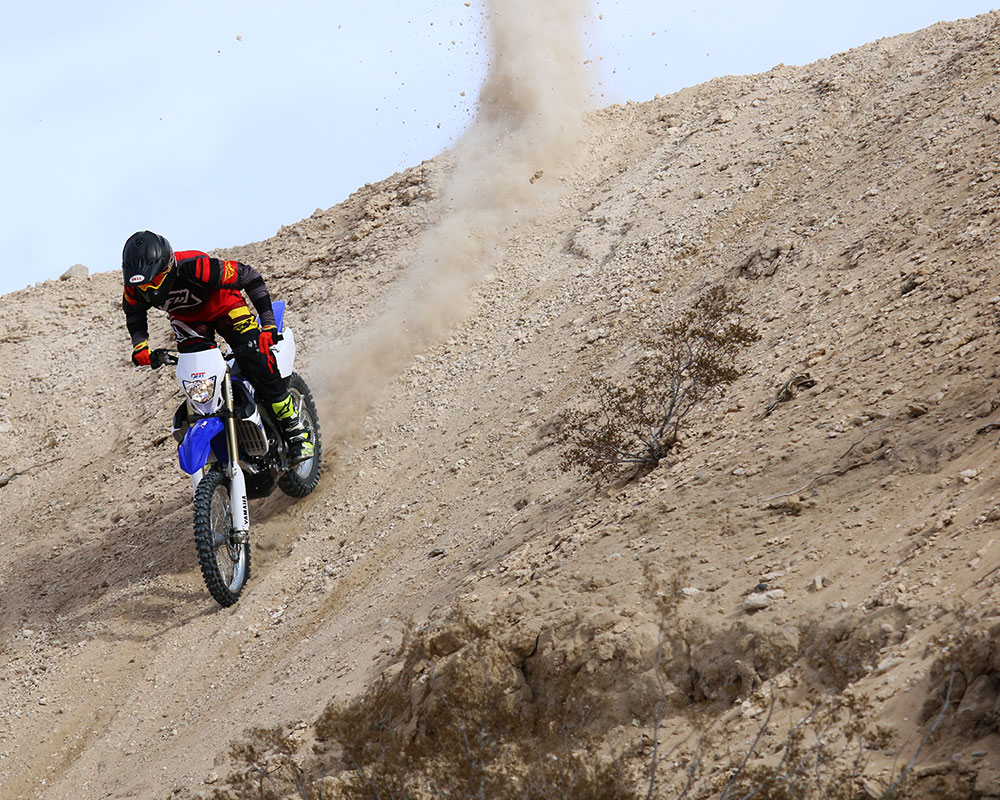

5 Responses to “2016 Yamaha WR450F”
Ed
Great write up. This site has the best tests on the web. Also your advice on heavier wedges for the Rekluse 3.0 really worked out great for me.
Thanks again!
PS. Love the top speed #’s for the offroad bikes
Me
Fantastic test. Love the detail you get into. Convinced me to get an FX and tune the power with the muffler.
Motodisiac
Great write up with nice attention to detail, as always.
I would like out point out one important advantage of WR over FX – green sticker in CA. This is the main reason I chose WR. I already added comp kit so pretty much I have FX with radiator fan and green sticker.
Question on suspension settings: I also noticed that the bike runs surprisingly stiff in stock form. I’m average 170lbs and I really had to back out on compression to make it more plush. I’m solid intermediate who doesn’t know how to dial in suspension. I want to try your settings but it’s not clear whether you ended up with 95mm or 100mm sag. Can you please clarify?
Jimmy Lewis
We have settled on 100mm for sag but Yamaha still suggests more. We are trying to keep the rear from riding low in the stroke. Try a little more compression on the suspension and see if that actually makes the bike feel softer as it may be riding low and in a stiff part of the stroke.
Motodisiac
Thank you for your reply. Bike came stock with exactly 100mm sag so I will leave it alone then.
This Sunday I ran suspension settings recommended in the article and they completely transformed the bike. I never had anything this stable and plush at the same time. Going over rocky sections is soooo easy now. Amazing transformation.